

Using comparisons to develop your essays
Home » IELTS academic task 2 » Using comparisons to develop your essays
There are usually only two main ways to compare items.
The first one is to point out their similarities and the second is to point out their differences.
Let’s go a little deeper into the discussion of how each one can be used.
I. Comparing similar items
Pointing out the similarities between two or more items can be done in two ways.
A. Expressing similarities but with different degrees or levels
- This means that the items compared share the same characteristics and qualities but one’s intensity is less or greater than the other.
- Here the words more, less, better, worse and words added with the suffix “er” are used.
1. Discrimination against women in economic, social and political aspects of society, appears to be more severe in developing countries than it is in wealthi er ones.
2. The integration of technology into our everyday lives has been beneficial to many but its accessibility is less apparent in the members of the low er class than in those who are members of the high and middle class societies.
3. The development of chemical weapons in some countries are among the growing concerns in the world but the intensifying effects of global warming is a more pressing issue that the world needs to address urgently.
B. Expressing similarities in a different way with two sentences
- Here the words/phrases similarly, in like manner, in a similar pattern, in a similar way, etc. are used.
1. Books are a wealth of knowledge. Similarly , the internet is a learner’s paradise, it just needs to be used purposefully and moderately.
2. Men are said to be the strength and protector of mankind. In much the same way , women are deemed as the heart and soul of humanity.
3. In the very early stages of our lives, as infants, we are very dependent on others for our every need. In a similar way , when we reach the latter years of adulthood we lose or weaken our faculties and resume dependency on others.
II. Comparing different or contrasting items
Pointing out the differences between two or among three or more items can be expressed in two ways.
A. Contrasting with one sentence
- This means pointing out the difference/s in items with the use of just one (1) sentence. - Here you make use of the words/phrases like while, whereas, however, but, in contrast to, compared with, and more.
1. Adults deem play only as a fun leisurely activity, whereas , children deem it as a serious business.
2. Compared with cameras in Android phones and iPhones which are lighter and produce relatively good images, SLR/DSLR are heavier and more complex to use but they are still more preferred by professional photographers.
3. In contrast to the methods used by conventional doctors, non-conventional doctors promote the use of healthy diet and lifestyle and other less painful and less costly ways to fight cancer.
III. Contrasting with two sentences
- This means pointing out the difference/s in items with the use of two (2) sentences. - Here you still make use of similar phrases like in contrast to, compared with, on the contrary, opposite that, from a different perspective, from a different viewpoint, on the other hand, and more.
1. (On the one hand) Financial advisors recommend investments in bonds, mutual funds and FX swaps. On the other hand , businessmen believe that the best investment would often be in private companies.
2. Dehydration can cause blurred vision, brain fog and even high blood pressure. In contrast , being over hydrated causes an imbalance in one’s electrolyte levels.
3. Some analysts believe that formal qualifications prepare workers better. On the contrary , others believe that there is no substitute for real world experience.
*On the contrary is usually used for giving opinions.
Final Thoughts
A great way to develop your essay is through the use of comparisons and there are four different ways described here which you can choose from.
All you need to do now is to practice using each one as many times as possible and find out later which one will best fit the answers you come up with during your IELTS test.
For more help with your IELTS exam , take a look at some more IELTS Writing task 2 questions .
- Free Essay Band Score Evaluation
- Sign up to claim your free IELTS materials
- Jump to Band 7 or it’s Free
- IELTS Writing Evaluation
- IELTS Band Score Calculator
- Book Your Online IELTS Test
- Sample Topic Answers
- Useful Sentences
- Sample Task 2 Questions 2022
- Introduction to Paraphrasing
- Model Band 9 Essay
- Five Band 9 Words
- Model Band 7 Essay
- Differences Band 9 vs Band 7 Essay
- Band 6.5 Essay
- Academic Collocations
- Topic Sentences
- Discuss Both Views
- Tutorial: To What Extent Essays
- Paraphrasing Introductions
- Essay Structures
- Essay Plans
- Describe a Pie Chart
- Using Percentages
- Map Vocabulary
- Describe Flow Charts
- Describe a Bar Chart
- How to get Band 9
- AT 1 Sample Questions 2022
- Describe a Graphic
- GT Task 1 Questions 2022
- IELTS Vocabulary
- Google Play / Podcasts
- Apple Podcast
- Android App
- Task 2 Sample Questions
- AT 1 Questions
Company addresses: HK Office: BW ENGLISH SERVICES HK Ltd, Unit 2512, 25/F, Langham Place Office Tower, 8 Argyle Street, Mongkok, Hong Kong UK Office: BW ENGLISH SERVICES, 120 High Road, East Finchley, N29ED, London, England, United Kingdom +44 20 3951 8271 ($1/min).
Welcome Guest!
- IELTS Listening
- IELTS Reading
- IELTS Writing
- IELTS Writing Task 1
- IELTS Writing Task 2
- IELTS Speaking
- IELTS Speaking Part 1
- IELTS Speaking Part 2
- IELTS Speaking Part 3
- IELTS Practice Tests
- IELTS Listening Practice Tests
- IELTS Reading Practice Tests
- IELTS Writing Practice Tests
- IELTS Speaking Practice Tests
- All Courses
- IELTS Online Classes
- OET Online Classes
- PTE Online Classes
- CELPIP Online Classes
- Free Live Classes
- Australia PR
- Germany Job Seeker Visa
- Austria Job Seeker Visa
- Sweden Job Seeker Visa
- Study Abroad
- Student Testimonials
- Our Trainers
- IELTS Webinar
- Immigration Webinar
IELTS Academic Writing Task 1 : Compare and Contrast
Updated On Aug 25, 2023

Share on Whatsapp
Share on Email
Share on Linkedin

Limited-Time Offer : Access a FREE 10-Day IELTS Study Plan!
Like it has already been discussed in all the other TASK 1 lessons, to get a high band score in your Writing Section, you need to use appropriate vocabulary.
In IELTS Writing Task 1 , you are commonly provided with graphs, pie charts, etc. which have data that should be compared and contrasted.
In this lesson, you will learn the type of vocabulary that you’ve got to use to compare and contrast information in the graph.
Comparative and Superlatives
To compare any graphs or charts, you need to use comparatives or superlatives.
Comparatives are used when comparing two things.
Jill runs faster than Ted.
Superlatives are used one thing against a group of elements.
Jill runs faster than any other girl in her class.
There are a few basic ways in which these words are formed. They are:
Other Vocabulary
Though Comparatives and Superlatives are essential, they aren’t sufficient for an IELTS Task 1 essay. Therefore, we should use other kinds of vocabulary.
Subordinating Conjunctions

Although the sale prices of the CDS decreased, it remained the same for the year 2002 and 2003.
The sale prices of the CDs decreased in 2001, whereas/while it remained the same in the year 2002 and 2003.
Transitions

- In 1970, the most popular fast food was pizza, over 300 grams were consumed each week. By 1990, however , this had fallen to just over 200 grams.
- There was a vast increase in the consumption of Fish and Chips. In contrast, there was a drop in the consumption of pizza over the years.
- On the one hand, the consumption of hamburgers increased. On the other hand, the consumption of pizza decreased.
Other Structures

- Like Canada, Japan also has a 99% adult literacy rate.
- Canada has more annual income than all the other four countries.
- The adult literacy rate of Zaire is far less than all the other four countries.
- As observed from the given data, daily calorie supply in Canada and Japan was 3326 and 2846 per person, while this ratio in Peru and Zaire was almost half, with 1927 and 1749 per person.
- Initially, the annual incomes of Canadian and Japanese people were much higher than in Peru and Zaire.
- Zaire’s life expectancy is not as high as Canada’s or Japan’s.
- The economic and social living standards of Canadian and Japanese citizens were far better than those of the people of Peru and Zaire.
Using Approximate Data
When you are comparing and contrasting, you don’t usually have the exact numbers, like in the chart below. Thus you use appropriate phrases for comparative data.
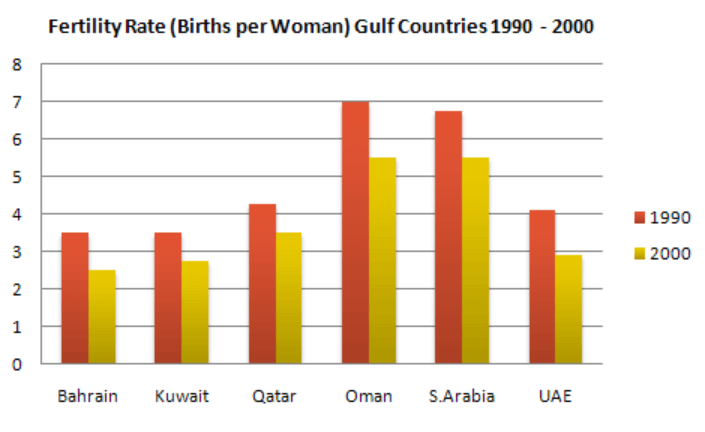
- In 1990, the fertility rate in Kuwait was just over 3.
- In 1990, the fertility rate in Kuwait was approximately 3.
Here you can see that if your value is above the value mentioned and there is no precise number given, you can use ‘just over’ or ‘approximately.’
- In 2000, the fertility rate in the UAE was nearly 3.
- In 2000, the fertility rate in the UAE was almost 3.
Here you can see that if your value is below the value mentioned and there is no precise number given, you can use ‘nearly’ or ‘almost.’
Also check :
- IELTS Writing task 1 tips
- IELTS Writing task 1 Diagram
- IELTS Writing tips
- IELTS Writing recent actual test
- IELTS Writing Answer sheet
- IELTS map vocabulary
- IELTS Writing Task 1 Connectors
Practice IELTS Writing Task 1 based on report types

Start Preparing for IELTS: Get Your 10-Day Study Plan Today!
I HACK YOUR ACCOUNT
Explore other Writing Task 1 Articles
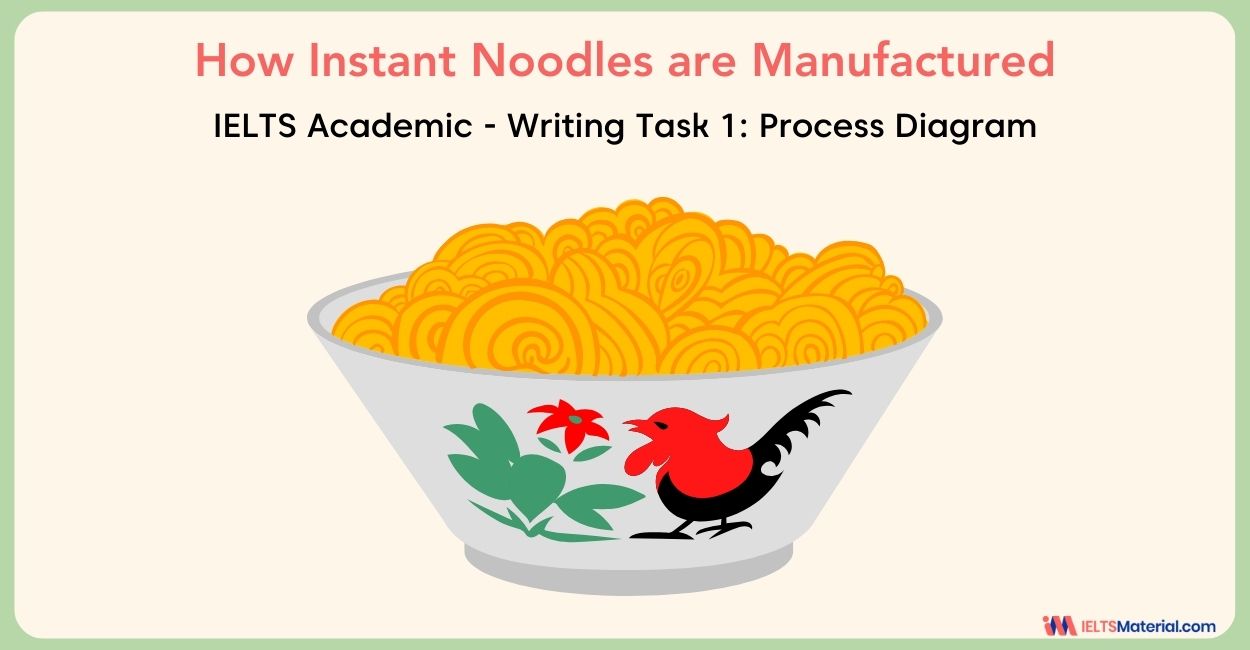
Kasturika Samanta
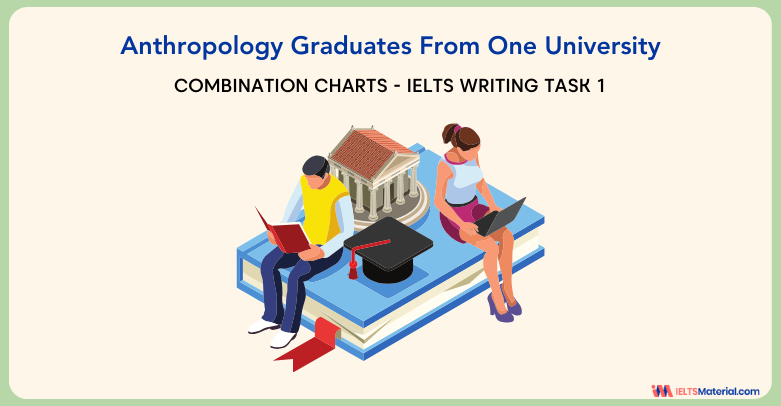
Nehasri Ravishenbagam
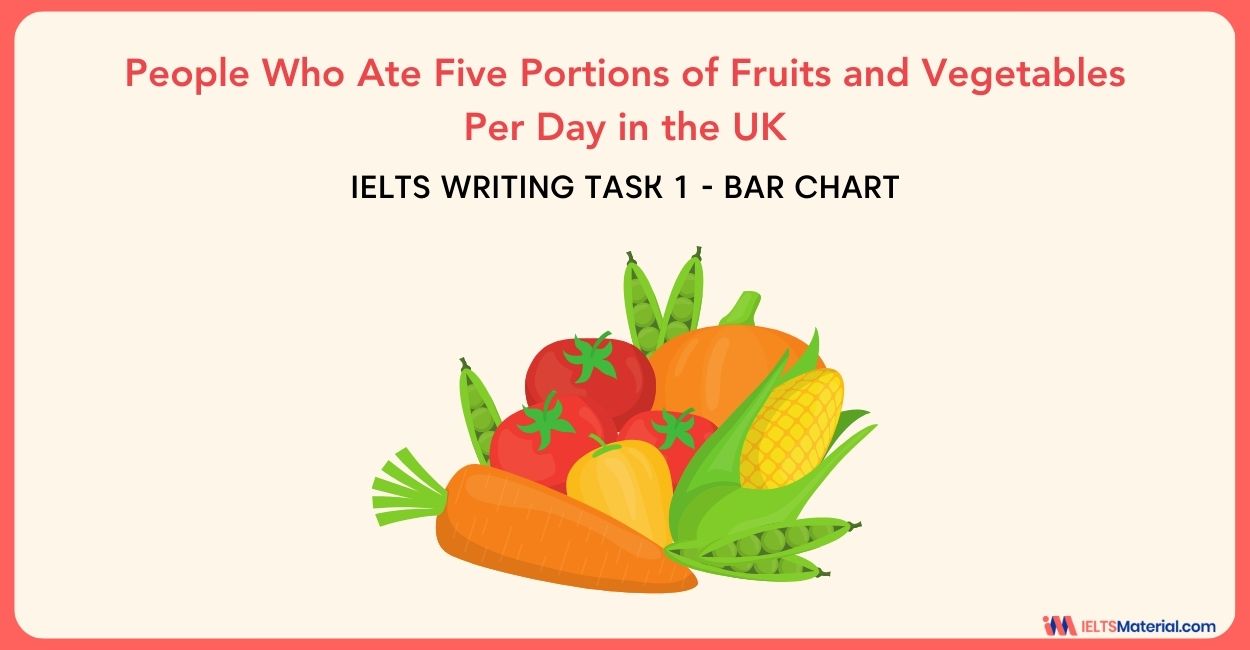
Post your Comments
Posted on Sep 12, 2023
Is it improtant to right every detail of task 1
kavita Timbadia
Posted on Sep 13, 2023
It depends on the quantum of data provided in the infographic. Identifying important information and stating is important. For further detail evaluation . You can avail a Free trial class Find the link below: https://ieltsmaterial.com/signup-1/
Recent Articles
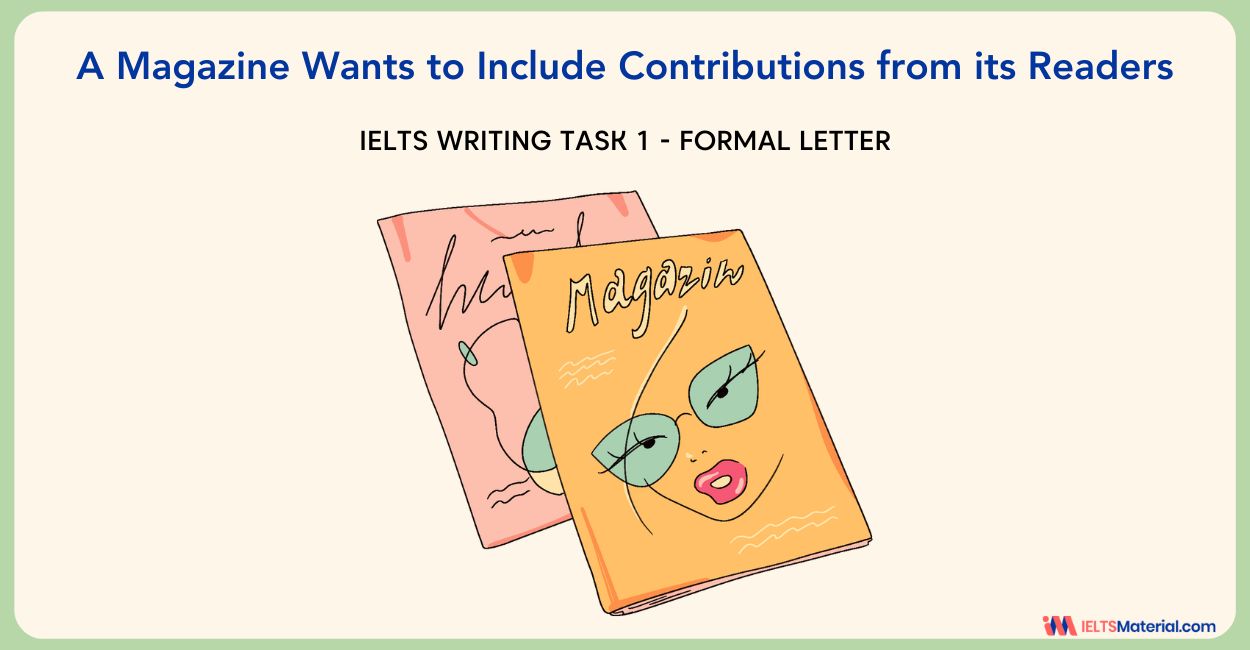
Raajdeep Saha

Our Offices
Gurgaon city scape, gurgaon bptp.
Step 1 of 3
Great going .
Get a free session from trainer
Have you taken test before?
Please select any option
Get free eBook to excel in test
Please enter Email ID
Get support from an Band 9 trainer
Please enter phone number
Already Registered?
Select a date
Please select a date
Select a time (IST Time Zone)
Please select a time
Mark Your Calendar: Free Session with Expert on
Which exam are you preparing?
Great Going!
Join us at My IELTS Classroom today for our video courses, marking service, 1-2-1 lessons and so much more…

Language for IELTS compare essays
You can guarantee that some point during your IELTS exam, you will need to demonstrate that you can make good comparisons. Interestingly, although the language of comparison is introduced at an Elementary level in most English course books, this is something that many high-level students still struggle with. Today, Nick and describe 4 ways that you can make comparisons in IELTS compare essays, and then show how the same techniques can be used to good effect in the speaking test (which Nick giving a masterful demonstration of how to answer some Part 3 questions)!
Below, you can find a summary of the episode, which includes all of the links to useful materials and the times of each part of the discussion (so you can go directly to the part you want to listen to) 🚀
Subscribe to My IELTS Classroom podcast on Apple podcasts here
Subscribe to My IELTS Classroom on Google podcasts here
Become a Patreon to gain access to extra BONUS episodes here

When you may need to use or understand compare language in the IELTS exam
The ability to make accurate comparisons is a fundamental English skill, so it is no wonder that it is tested throughout the IELTS test. For example, True, False, Not Given questions in the reading often focus on checking if a given comparison is correct. Part 3 of the speaking exam almost always contains at least one question that will ask you to compare ideas or statements ( as we will see at the end of the episodes when we put Nick to the test) and any student sitting the Academic version of the test knows that they have a 50% chance of getting a chart that shows either change or comparison.
In today’s episode, however, we are going to focus primarily on how you can make comparisons in IELTS essays. Unlike other tests, although no essay prompt ever asks you directly to “compare and contrast”, this does not mean that there are no IELTS compare essays. On the contrary, there are three common types of essay that will require you to make accurate comparisons:
1 Agree / Disagree essays that are actually IELTS compare essays
These are perhaps the most obvious “IELTS compare essays” because despite asking you to “agree” or “disagree” they directly present you with two opposing options, which must be compared. Take this question for example:
Governments should spend more money on railways than roads. To what extent do you agree or disagree?
Obviously, to answer this well, you will have to weigh up the benefits and drawbacks of both types of investment and compare them directly to decide which is best (and, thus, if you agree or disagree.
2. Discuss Both sides essays that are actually IELTS compare essays
In a similar way, many Discuss Both Sides essays give you absolute opposite views on the same topic. Again, in order to decide which approach is the best, it will be necessary in your discussion to compare them in some way:
Some people say that parents should encourage their children to take part in organised group activities in their free time. Others say that it is important for children to learn how to occupy themselves on their own. Discuss both these views and give your own opinion.
3. Essays that ask you to discuss a recent social change are actually IELTS compare essays
I have become quite obsessed recently with social change essays. That is because they are becoming more and more common but are overlooked by most IELTS teachers. Nick and I spent a whole hour in August explaining what social change essays are and how you can approach them best. If you have’t listened to that episode yet, I strongly recommend that you do so now as it could really save your score for Task Response if you get a similar essay in your test. Just click here .
Today more people are travelling today than ever before. Why is this the case? What are the benefits for the traveller?
Very simply though, a social change essay is one that asks you to look at an emerging trend in society. Most of the time you will be asked why that change is happening and then to comment on whether you think it is a positive or negative one. The key to answering these questions well is to focus on the CHANGE i.e. to consider why this trend is happening more today than in the past.

In other words, you will need to compare people’s behaviour in the past to their behaviour today. For the above question, that will mean not focussing on why people travel a lot today, but why they are travelling more today than in the past. It is considering the change that will lead to a high score.
Click here to watch the first three lessons in our IELTS Writing Course to see the difference that genuine expertise can make to your preparation.
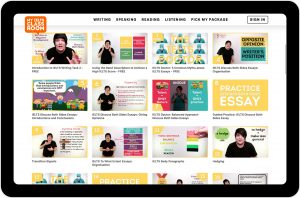
4 Ways to show comparisons in IELTS compare essays
Ways to compare 1 – use the “contrast” comparison.
Our first way to compare is a good one for lower level learners as it does not require any specialist comparison language. All we are going to do is write one sentence describing X and a contrasting sentence describing Y, and join the two sentences using “In contrast”. Let’s look at an example sentence for the the railways / road question:
Railways are an environmentally friendly form of transport, with relatively little carbon emissions per passenger. In contrast , many cars often carry just one passenger and emit not only carbon but other poisonous gases into the atmosphere.
As you can see, this a very straightforward strategy as we are using the present simple in each sentence, but it is still a very effective way of making an argument. Note that in this sentence, we do not use “ on the other hand ’ as that signpost is usually only used to transition between paragraphs.
If you want to make a shorter comparison, or to make a complex sentence, you can replace “in contrast” with “while” or “whereas”.
Railways are an environmentally friendly form of transport as they can carry hundreds of passengers whereas many cars often carry just one passenger, especially during rush hour.
Now, although the function of “in contrast” and “while” or “whereas” is the same, you cannot just make a one-to-one swap as these are different types of words grammatically. “In contrast” is a transition signal and “while” and “whereas” are subordinators. That means you need to use “while” and “whereas” between TWO clauses not two sentences.
If you are not sure of the difference, please stop reading and go and watch my free video lessons “Three types of Contrast” by clicking here .
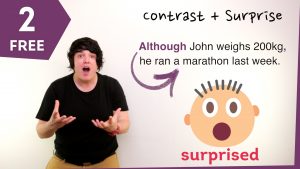
Ways to compare 2 – Use the “unlike” comparison
Making simple comparisons using “in contrast” or “while” or “whereas” is a fantastic strategy in the exam, but sometimes these sentences can result in sentences with a problem. Have a look at these three sentences (based on the questions in the introduction) to see if you can spot what the problem with the underlined clause is:
- It can be comfortable travelling long distances by rail whereas in a car it can be tiring for the driver.
- Children who take part in group activities can learn the value of working as a team and how to communicate with other members of the group whereas those who spend time on their own do not have this chance.
- In the past it was expensive to fly to another city, but now it is relatively cheap .
Can you see the issue? All of these sentences make nice comparisons, but there is too much repetition in the second clause. I mean, do we really need to give a long explanation of the “other option” every time?
For example, if you say that travel abroad is expensive, do you really need to say that travel at home is cheap? Surely that is obvious!
In the same way, if you say that children who take part in a group activity learn communication skills, is it really necessary to point out that those who spend time on their own do not? Again, this seems repetitive.
One way to avoid this is to use an “Unlike” phrase to replace the repetitive second clause .
Let me show you how that will work:
- Unlike going by car , it can be comfortable travelling long distances by rail
- Unlike children who spend time on their own , those who take part in group activities can learn the value of working as a team and how to communicate with other members of the group.
- Unlike twenty years ago, now it is relatively cheap to fly to another city.
It is quite simple, isn’t it? We keep the clause that contains the important information (i.e the information that we want to focus on) and replace the repetitive clause with a short one that starts with “like and summarises what we are comparing to. Simple, but VERY effective. This type of comparison earns my gold star recommendation of the day!

Ways to compare 3 – Use comparative adjectives
Now we come to the classic way of comparing – using a comparative adjective. This is the comparison language that we learn from a low level at school, so I don’t want to spend too much time looking at it today (we also have a 35 minute lesson in our IELTS Grammar course that covers this in great detail), but let’s go through the basics here:
- If your adjective has one syllable , you will add -er to the end to make the comparative: bigger / taller / shorter. Note that if your adjective ends in a vowel followed directly by a consonant, you will need to “double” the final consonant: ho tt er / bi gg er
- If your adjective has two syllables and ends in “y”, you will move the “y” and add -ier to the end to make the comparative: funnier / luckier / happier. If your adjective has two syllables but does NOT end in “y”, then you will just need to add “more”: more modern / more boring / more tired
- If your adjective has three syllables, you will again just need to add “more”: more expensive / more challenging / more fashionable
We can also add adverbs into these sentences to make our comparisons more precise and (importantly for IELTS) slightly more complex.
If there is a small difference between the two items, we can add “slightly” or “a little”
- Buying a yearly travel pass is only slightly cheaper than buying and running a car.
- Taking a holiday in your own country can often be only a little less expensive than travelling abroad.
If there is a big difference between the two items, we can add “far”, “way”, “a lot”, or “much”:
- Living in the countryside is far healthier than in the city.
- Working at home makes it way easier to have a good work-life balance.
- Travelling by train is far more comfortable than by bus.
- It is much easier to tell a person bad news by text message than face to face.
3 Potential Problems with using comparative adjectives ☠️
1. Be careful when you use “much” that you do not automatically use “more”
Students seem to automatically write “more” when they write “much”. This can cause problems when you are using a “short” comparative adjective that ends in -er. Why? Well, because the “-er” is already making the comparison, so adding an extra “more” means that you are saying “more more”!
- eating in a restaurant is much more expensive than cooking food at home
- going to the theatre is something to enjoy but smartphones have made our movie experience much more better
2. Be careful when you have a list of comparatives that all are in the comparative form.
Another problem can be that students remember the comparative rules for the first item in a list, but then forget them for the second:
- First, houses are often more spacious and roomy / roomier than apartments.
- Cleaning, repairing and refurbishing apartments is usually easier as they are much smaller and compact / more compact than a house.
3. Although you need “than” in the sentence, it is NOT what “compares” on its own!
Take a look back at all of the comparative sentences that I have written in this section. You will notice that they all contain the word “than”. This is a vital component of compare sentences but it DOES NOT make the comparison – it is the adding “-er” or “more” that does this.
- We are getting busy day by day than before
- We are getting busier day by day than before.
In fact, in many sentences, you can omit the “than X” because it is clear from context, but the comparative adjective must remain! For example if we have the phrase ‘day by day” in this sentence, we really don’t need to add “than before” as it is obvious what we are comparing!
- We are getting busier day by day than before
Looking for help with IELTS grammar? We have a dedicated 10-hour course that is specifically designed to show you the structures needed for a 7.0+ Click here to watch the first three lessons for free.
Ways to compare 4 – Use “as + adjective + as” to compare
This is the other classic way to compare. Rather than having to change the adjective to the comparative form, you can simply use it between two “as”:
- Women are as intelligent as men
This form of comparison is designed to show that the two items are EQUAL i.e. there is no difference between the intelligence of men and women. However, I don’t think that many things in life are truly equal, so we often add adverbs to show that there is a difference.
If there is a small difference between the two items, we can add “almost” or “nearly”.
- Eating sugar every day is almost as dangerous as smoking.
- Most teachers are nearly as worried as parents about the problem.
If there is a big difference between the two items, we can add “nowhere near”
- Traditional games are nowhere near as interactive as electronic games.
One common problems in IELTS compare essays ☠️
One mistake that I often see repeated is that students seem to think that all they have to do to compare is add the phrase “ compared to ” or “ as compared to ” at the end of a sentence. This is not true! In fact, it is very hard to make a comparison using only the phrase “compared to”, and if this is a phrase that you use often, I would recommend that you forget it and start using one of the four techniques above.
Look at the four sentences below for example. None of them are correct as the students have tried to compare using only “compared to”. Can you change the sentences to be correct? We will give you the answers in the podcast:
- The houses are big compared to the past.
- I would like to bring to your attention the reason as to why children are not visiting the park frequently these days compared to the past .
- People can interact with each other easily as compared to the past .
- Living in the countryside is much fresh compared to living in the city
Bonus! Listen to Nick answer these Speaking Part 3 Compare questions
We all know that there is nothing I like more than making Nick work in a podcast. Today, I thought that we could put his vast experience of IELTS speaking tests to good use by making him answer these questions. How did he get on? You will need to listen to find out!
Is it more enjoyable to do free time activities inside or outside?
Do you think young people and old people have the same attitude to change?
Is it better for a person to show their emotions or to hide them?
Do you think life was better before the invention of the computer?
Do you think living in a nice place is more important than having a good job?
What are the differences between the cause of stress today and in the past?
Posts navigation
- All Posts ,
- Writing ,
- Speaking ,
- Listening ,
- Reading ,
- Grammar ,
- General Advice ,

Real experts, real lessons, real success!
If you like my blog, you'll love our IELTS Writing packages
- 45 hours of video lessons with a genuine IELTS expert that prepare you for ANY IELTS question
- Integrated grammar and writing skills lessons to help you reach 7.0+
- Hundreds of downloadable practice activities and model answers
Try our free video lessons today!
Free IELTS Advice?
Subscribe to our mailing list to receive regular tips, tricks and special offers!
- Skip to primary navigation
- Skip to main content
- Skip to primary sidebar
- Skip to footer

IELTS Advantage
IELTS Preparation Courses
IELTS Writing Task 2: ✍️ Everything You Need to Know
When helping students prepare for the IELTS test, one of the biggest fears is how to do well in IELTS Writing Task 2.
IELTS Writing Task 2 is the second part of the writing test, where you are presented with a point of view, argument or problem and asked to write an essay in response. Your essay should be in a formal style, at least 250 words in length and you should aim to complete it in under 40 minutes.
IELTS Writing Task 2: Everything You Need to Know
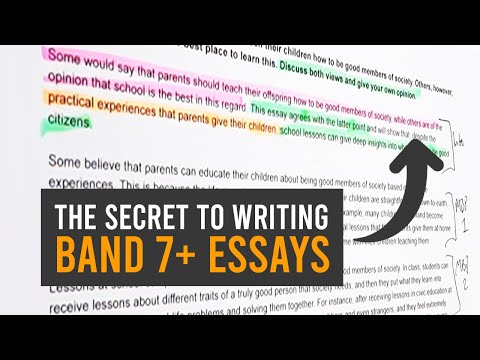
In this video, I’ll outline exactly what you must do to create an IELTS Writing Task 2 essay that could score a Band 7, 8 or 9.
It doesn’t matter if you’re new to IELTS or if you’ve failed the exam before – I’ve broken everything down into a simple 3-step process that anyone can use to improve their scores! Watch the video above to find out what they are.
5 Steps to a Band 7 in IELTS Writing Task 2
1. Understand the question.
You must understand the question before you attempt to answer it. This way, you’ll know exactly what the examiner is looking for. One of the biggest mistakes students make is not answering the question fully, which stops them from getting a score higher than a Band 5.
To analyse the question , you must first identify the question type, then identify the keywords in the question and finally identify the instructions words. This will help you understand exactly what the examiner wants you to do with the question.
2. Plan your answer.
The students who get the highest marks in Writing Task 2 always plan their answers for up to 10 minutes. Planning helps you organise your ideas and structure your essay before you write it, saving you time and helping you produce a clear and coherent essay.
3. Write an introduction.
The introduction should answer the question directly. This tells the examiner that you know what you are doing straight away and helps you write your main body paragraphs.
4. Write the main body paragraphs.
This is where you give the examiner more detail . You do this by stating your main points and supporting these with explanations and relevant examples.
5. Write a conclusion.
In your conclusion , you should provide a summary of what you already said in the rest of your essay.

4 Ways to Improve your Score in IELTS Writing Task 2
Many people know they need to improve their writing skills but don’t know how to do it. Here are 4 ways you can boost your score in Writing Task 2:
1. Understand the exam.
You must first understand what IELTS Writing Task 2 is, what you are expected to do and how to give the examiners what they want. This is the first stage and one that is often overlooked.
There are many online resources, often with conflicting and poor-quality information, so finding a reliable source of information is key.
2. Identify your weak areas.
If your car breaks down, you would try and identify which part caused the problem. If you get sick, your doctor will run tests to determine the exact cause of your symptoms.
IELTS Writing Task 2 is the same. We must first identify WHY you are not getting the score you need before we can help you improve.
However, be very careful! You wouldn’t ask the average man on the street for medical advice, so make sure you find someone who knows what they are doing and has the expertise to help you with this.
3. Fix the problems.
Now that we know what the problems are, we must fix them.
If your grammar needs work, fix those issues. If your vocabulary is lacking, work on fixing this issue.
Just as a good doctor can help you fix a medical problem, a good IELTS teacher can help you fix your specific issues.
4. Practice and get feedback.
Practice alone will not help you. It is an essential part of your preparation, but you must also get feedback on your work if you are really going to improve.
You wouldn’t try to teach yourself how to drive without an instructor, would you?
Find someone who will give you accurate and helpful feedback on your work. Otherwise, you will not be able to move to the last stage.
Now that you have understood what you need to do, identified the exact areas you need to work on, improved those areas, and received feedback on your work, you are now ready to get the IELTS Writing Task 2 score you deserve.

Writing Task 2 Structures
I want to warn you about structures because they are not a magic wand that will help you automatically get a higher score. They WILL help you, but please realise that they are just a small part of your overall score.
These structures provide a sentence-by-sentence template for all the main Task 2 question types, making your job much easier on exam day.
- Task 2 Essay Structures
Essential Writing Task 2 Skills

No matter how good your English is, you must still learn IELTS writing skills before taking the Writing Task 2 test. These helpful guides will take you through each of these skills step-by-step:
- How to Plan an Essay
Making a good plan actually saves you time when you write your essay. This guide will show you how to plan and write a clear essay every time.
- How to Think of Relevant Ideas
This guide provides 5 different methods to help you quickly think of relevant ideas that are directly linked to the question.
- How to Write a Complex Sentence
Complex sentences help you boost your score for grammar. They are actually very simple to write and are not complex at all.
- How to Paraphrase
Paraphrasing is one of the essential IELTS skills for all parts of the IELTS test. You should paraphrase the question in the very first sentence of your essay to help boost your vocabulary score in Writing Task 2.
- How to Write a Supporting Paragraph
Supporting paragraphs are the main body paragraphs and are the meat in the sandwich. This is where you provide the detail the examiner is looking for in the form of explanations and examples.
- How to Write a Thesis Statement
A thesis statement tells the examiner your opinion. Many IELTS Writing Task 2 questions specifically ask for your opinion, and if you don’t write it clearly, you have not answered the question properly. This article shows you how, where and when to give your opinion.
How many words should I write?
Around 250 words? Exactly 250 words or over 250 words? How many words over? How do I know how many words I have? Will I lose marks if I write too many words? This article answers all those questions.
- How to Understand and Analyse Any Question
A critical part of answering any question. This article shows you how to break down any Task 2 question and identify the keywords, micro-keywords and instruction words to help you answer the question effectively.
- How to Write a Great Introduction
The introduction is the first thing the examiner reads; therefore, we must give them a good first impression. I share a very specific sentence-by-sentence structure in this article to help you write introductions quickly and effectively.
- Task 2 Marking Criteria
Do you know how Task 2 is marked? What is the difference between a Band 5 and a Band 8 answer? This article breaks down the marking criteria and explains it in simple language so you can give the IELTS examiners exactly what they want.
- How to Write a Conclusion
A good conclusion should be a summary of your main points. The conclusion is the last thing the examiner reads, and if you can write a good one, you will leave them with a very good impression.
- Using Examples
Each of your supporting paragraphs should have a specific example that supports and illustrates your main point. This is an essential skill to learn if you want to get one of the higher band scores.
- Cohesive Devices
Cohesive devices (sometimes called linking words) are one of the most misunderstood and misused elements of writing. Therefore, you must learn how to use them and when to use them.
- The Danger of Synonyms
While synonyms are very important, they can also really reduce your mark if used incorrectly.
- Paragraphing and Editing
This article will show you how to make your writing as clear and as easy to read as possible. It will also advise you on whether to use a pen or pencil.
- IELTS Writing Task 2: 8 Steps to Success
Read this blog now to access our 61-page Task 2 strategy.
- IELTS Writing Tips
I have compiled these tips after years of teaching IELTS, and all of them have been approved by IELTS examiners.
- Coherence and Cohesion
This is a video lesson that shows you in practical terms how to improve your coherence and cohesion score.

Writing Task 2 Common Topics

Knowing the common topics can help you prepare for the test more efficiently. Here are the 10 most common topics over the last few years. Studying hard is great, but don’t forget to study smart.
The article below will show you the top 10 most common IELTS topics.
- Most Common Task 2 Topics
Full IELTS Writing Task 2 Practice Lessons

Here are some lessons that I have used when teaching students about IELTS Writing Task 2. I have changed them so that you can easily learn from home. They are very long but contain all the necessary information combined with the skills above.
- Agree or Disagree (Opinion) Lesson
In this lesson, we look at how to tackle an ‘agree or disagree’ question. Many people worry about whether to take one side of the other or discuss both sides. Additionally, people also worry about how to deal with ‘To what extent’ question types. We allay all of these fears in this lesson.
- Discussion Essay Lesson
‘Discuss both views’ questions often confuse people because you are asked to do many things in one essay. As such, it is very important to remember that the question asks you to discuss BOTH views AND give YOUR opinion.
- Problem and Solution Essay Lesson
These questions are much easier than you think. You probably discuss problems and solutions in your day-to-day life all the time. Keep it simple.
- Advantages and Disadvantages Lesson
There are a couple of different types of advantages and disadvantages questions. This lesson will show you how to answer them.
- Writing Task 2 Exercise with Video
Writing is a skill, and just like any other skill, it is important to practice to improve.
- From Band 6.5 to 8 Demo Lesson
This is my most comprehensive free lesson on IELTS Writing Task 2. We show you how we took one VIP student from Band 6.5 to an amazing 8.
Sample Answers
You must have some good examples to compare your writing and see if you are on the right track. Click the link below for lots of sample answers and over 100 questions.
Task 2 Sample Answers
- Agree or Disagree Sample Essays
- Task 2 Band 9 Sample Essay
- Latest Real Task 2 Questions
- Official Sample Test Questions
- Cambridge Sample Questions
- Free Practice Test
- How To Use Task 2 Samples
- Recent Confusing Questions
- IELTS Writing Practice Guide
IELTS Writing Task 2 Essential Information
- You must write an essay in response to a question.
- You must write 250 words or more.
- Task 2 is worth 2/3 of your total mark on the Writing test.
- You should spend around 40 minutes on this part of the test.
- General Training and Academic are essentially the same for Task 2. However, they are different for Task 1.
- There are certain types of questions that you will be asked, for example, opinion, discussion etc. See below for more detail on these.
- Task Achievement (25%)
- Coherence and Cohesion (25%)
- Lexical Resource (25%)
- Grammatical Range and Accuracy (25%)
Grammar and Vocabulary

Grammar is one of the four things you will be marked on in the Writing Task 2 test. Finding out what your common grammar mistakes are and then fixing them is a very powerful way to boost your score in this area. Here are some common grammar mistakes I have found after making hundreds of tests.
- Top 10 Grammar Mistakes
For most IELTS students, the problem is not grammar in general. In fact, it is usually just 1-2 problem areas. Therefore, when you fix these main weaknesses, you’ll be able to improve your grammar and your writing score dramatically.
- Using Personal Pronouns
Hint- They aren’t as big of a deal as you think.
See the interactive tool below for the answers to the most commonly asked questions we receive about IELTS Writing Task 2:
IELTS Writing Task 2 FAQs
How can i improve my writing.
You will find all the resources you need on our Writing Task 2 page. Click the link below:
Writing Task 2
We also have two Task 2 courses for those that need to improve their Task 2 skills and strategy. They are both based online and completely free of charge. Learn more about them below:
Task 2 5 Day Challenge
Task 2 Essay Builder
If you need serious help or personalised feedback, you should check out our VIP Course. There is a waiting list, but you can add your name here:
How can I get a Band 7, 8 or 9?
The answer to this question is different for every individual IELTS student, as it depends on a number of factors, including your work ethic, English skills and exam strategy. You'll find a guide to answering this question in this article
If you need serious help with improving your IELTS scores, you should check out our online writing course. There is a waiting list, but you can add your name by clicking the link below:
Can you correct my writing?
Please click the link below and it will give you all the information you need about our writing correction service:
Writing Correction Service
Do you have any sample answers?
Yes, you will find them at the link below:
Will using 'high level' or 'academic' words help me improve my score?
Probably not.
Read my recent article about IELTS vocabulary here:
5 Things You Need to Know about IELTS Vocabulary
Can I use idioms?
No, you should not write idioms for Task 2.
Can I use personal pronouns?
You should avoid using personal pronouns, but it is fine to use them when giving your personal opinion.
Do you write a conclusion for Task 2?
Yes, it is very difficult to get a good score in Task 2 if you haven't finished your essay with a conclusion. You will find an in-depth lesson on conclusions here:
How to Write an Effective Task 2 Conclusion
How many paragraphs should I write?
Most IELTS task 2 essays follow the same basic four paragraph structure:
- Introduction
- Supporting Paragraph 1
- Supporting Paragraph 2
However, you can find more comprehensive help with structuring your Task 2 essays here:
5 Day Challenge
Do I need to plan my essay?
I would highly recommend planning your essay. A good plan acts like a map that guides you through the essay, ensuring that you give the examiner exactly what they need to award you the score you need. You can find help with planning your essays here: How to Plan an IELTS Essay
You must write at least 250 words in Writing Task 2.
I would suggest that you aim to write around 270-280 words in total. Aiming for 20-30 words more than the required amount makes you more likely to reach the word limit without setting an unrealistic goal.
Will I lose marks if I don't write enough words?
Yes, if you don't write the required number of words, you will lose marks in 'Task Achievement' for not answering the question fully. Read more here .
Can I use contractions?
No, should not use contractions when you are writing an academic essay.
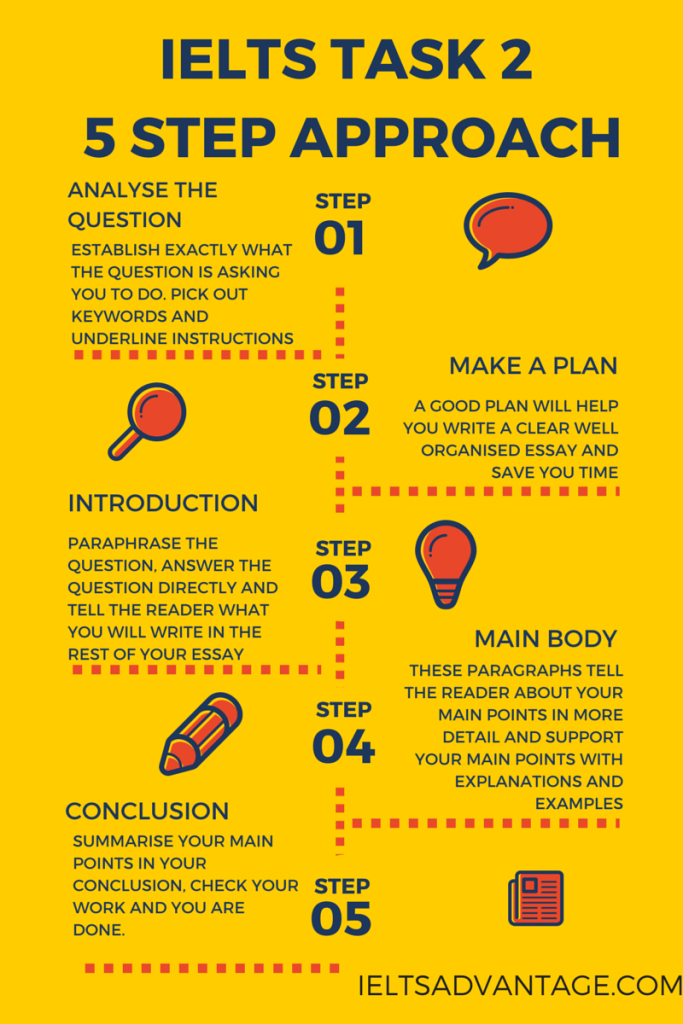
- +91 95392 59910
- [email protected]
- East of Budha Jn., Mavelikara

- Testimonials
- IELTS Speaking
The IELTS Writing Task 1 is a formal test that requires students to write a report based on a visual stimulus, such as a graph, chart, or table. One of the most common types of task 1 essays is the comparison essay, in which students are asked to compare and contrast two or more things.
Mastering IELTS Writing Task 1
Let us learn to write a comparison essay for IELTS Writing Task 1 . We will provide tips on reading the question carefully, identifying the similarities and differences between the two things you are comparing, using specific examples to support your points, and writing in a clear and concise style.
1. Read the question carefully
The first step to writing a good comparison essay is to read the question carefully. Make sure you understand what the question is asking you to do. The question will usually specify what you should compare and contrast. For example, you might be asked to compare and contrast two graphs, two maps, or two sets of data.
2. Compare and contrast the two items, noting their similarities and differences
When writing an essay, it is important to compare and contrast two subjects while organizing your thoughts effectively.
3. Please provide specific examples to support your arguments
When writing about the similarities and differences between two things, using specific examples to support your points is essential. This will make your essay more convincing and engaging. For example, if you compare two graphs, you could use specific data points from the graphs to support your points.
4. Use a logical structure
Your essay should have a clear and logical structure. This means that your paragraphs should flow smoothly and your points should be well-organized. It would help if you also used transition words and phrases to connect your ideas.
5. Write in a formal style
The IELTS Writing Task 1 is a formal test, so you should write in a traditional style. This means that you should avoid using slang, contractions, or informal language.
6. Proofread your essay carefully
Be sure to carefully proofread your essay for any grammar, spelling, or punctuation errors before submitting it.
By following these tips, you can write a great comparison essay for your IELTS Writing Task 1.
Additional tips:
- Start by brainstorming a list of similarities and differences between the two things you are comparing.
- Organize your thoughts by grouping the similarities and differences together.
- Write clear and concise topic sentences for each paragraph.
- Use evidence from the graphs, maps, or data sets to support your points.
- For smooth flow of ideas, use transition words and phrases to connect your thoughts.
- Write in a clear and concise style.
- Proofread your essay carefully before submitting it.
We hope these tips help you to write a great comparison essay for your IELTS Writing Task 1 .
Here are some examples of comparison essay questions that you might be asked in the IELTS Writing Task 1:
- Compare and contrast the two graphs below.
- Compare and contrast the two maps below.
- Compare and contrast the two sets of data below.
If you have any questions, please feel free to leave a comment below.
- grammarchallenge , IELTS , IELTS Writing Task 1 , Tijusacademy
Tiju's Academy
About author.

We provide friendly, professionally qualified and experienced trainers who help you to achieve your desired score. We also offer flexible and convenient timings which allow you to study even in your busy schedule. Listening and reading sessions are taken unlimitedly by specially trained tutors; therefore, they explain tips and strategies in each session which help to acquire your required score.
Recent posts
Most confused doubts in grammar, dickson brand – question 1, sandy kiran -question -2, thompson ted -question -3, choose your course.
IELTS Preparation with Liz: Free IELTS Tips and Lessons, 2024
- Test Information FAQ
- Band Scores
- IELTS Candidate Success Tips
- Computer IELTS: Pros & Cons
- How to Prepare
- Useful Links & Resources
- Recommended Books
- Writing Task 1
- Writing Task 2
- Speaking Part 1 Topics
- Speaking Part 2 Topics
- Speaking Part 3 Topics
- 100 Essay Questions
- On The Day Tips
- Top Results
- Advanced IELTS
IELTS Writing Task 2: Tips, Lessons & Models
Success in IELTS writing task 2 is based on using the right techniques. These free tips, model essays, lessons, videos and information will help develop the skills for writing task 2. This page will teach you how to maximise your IELTS writing task 2 score.
All lessons are on this page are for both GT and Academic writing task 2.
On this page, you will find for free:
- Test Information for Writing Task 2
- Practice essay questions
- Essential tips for IELTS writing task 2
- Free video lessons
- Model essays
- Practice lessons to improve your IELTS essay writing (paraphrasing, skills, ideas, spelling etc
Although some lessons are dated from years ago, all lessons and tips are 100% relevant to IELTS writing task 2 today.
1. IELTS Writing Task 2 Test Information
Learn about your IELTS writing task 2 test.
- IELTS recommend you spend no more than 40 mins on writing task 2. However, the time is yours to manage as you wish.
- You should write over 250 words. In the lessons below you will learn about word count and essay length.
- Learn how your total writing score is calculated: Total Writing Score Calculations
- Task Response (25%)
- Coherence & Cohesion (25%)
- Vocabulary (25%)
- Grammar (25%)
- For band score tips and details, see this page: IELTS Writing Task 2 Band Scores
- Academic writing task 2 is a formal essay. The common types of essays are: Opinion, Discussion, Advantage/Disadvantage, Direct Questions, Solutions. These categorisations will differ from teacher to teacher depending on how they like to teach. See below for 100 IELTS Essay Questions to practise at home.
- GT writing task 2 is the same as Academic IELTS. The essay is written in the same way and the scoring is the same. The only difference is that GT essay questions are often easier and topics are simpler.
- All words will be counted, even small or repeated words. See this page: How Words are Counted
- COMPUTER DELIVERED IELTS: See the following link to read Pros and Cons of Computer Based IELTS :
- For more information about IELTS test rules and info, see this page: IELTS Test FAQ
2. IELTS Practice Essay Questions
Practice essay questions to help you prepare ideas for topics in IELTS writing task 2. These questions have been written based on questions reported by IELTS students. They are not IELTS tests.
Over 100 IELTS Essay Questions
3. Essential IELTS Writing Task 2 Tips
The most important writing tips for a strong IELTS essay in writing task 2. Learn about the recommended essay length, how to plan your essay, when to give your opinion and how to write an introduction etc.
How many paragraphs for an IELTS essay? : Essay structure
Key Linking Words List : Academic Vocabulary
Types of IELTS Essays : Main Essay Types in Writing Task 2
Video: How to write an introduction paragraph : Complete lesson
Essay Planning Tips : How to plan your IELTS essay
Common Essay Topics : 20 Most Common Essay Topics
Video: Essay Length Advice : How long should your essay be?
Video: Official Writing Answer Sheet Tips : Using the answer sheet
When to give your opinion : Opinion Essay Tips
Video Using the last 5 minutes : Exam technique tips
Video: Paraphrasing Tips
Finding Ideas : Developing ideas for essay topics
4. More Video & Tips for Writing Task 2
- Deleting Words in your Essay
- Should I indent the first word of my paragraphs?
- 10 sentences to avoid in your IELTS essay
- Video: How to add examples to your essay
- Tips: Under Words Penalty
- Do advantages outweigh disadvantages tips?
- Video: How to give your opinion
- Can you use quotes, idioms or proverbs in your essay?
- Handwriting: Using cursive writing or not
- Essay Questions from 2016
- Writing a Long Introduction: Good or Bad?
- Video : Single-sex & Mixed Schools
- Video : Grammar – How to Add a Clause
- Video : Grammar – Connecting Sentences
- Video : Conclusion Linkers
- Video : Discussion Essay Useful Language
- Video : Using the Last 5 Minutes Tips
- Video : Should Ideas be Interesting?
- New Essay Topics for 2023
All Free IELTS Writing Task 2 Videos Lessons
5. Model Essays
Sample essays for IELTS writing task 2. These high score model essays will help you understand how to answer the essay questions and how to structure your writing.
- Agree Disagree Opinion Essay: Health
- Advantages & Disadvantages Essay: Language
- Cause Solution Essay: Crime & Punishment
- Direct Questions Essay: Happiness
- Opinion Essay: Social Media
- Discussion Essay: Work
- Direct Questions Essay: Family
- Direct Questions Essay: Art
- Positive or Negative Development: Social Media
- 2 Model Essays about Economy & Money /Buildings
- Model Essay & Question for Topic of Education
- Two Question Essay: Technology
6. Practice Lessons for Writing Task 2
Develop your IELTS writing skills and get useful ideas for many essay questions. Lessons are in order of date and new lessons will be added over time.
- New Essay Topics in 2023 (these are new topics only. You also need to prepare all common topics as well)
- IELTS Essay Topics Prediction 2022
- Grammar Test : Using “the” with countries and nationalities
- Paraphrasing Practice 1
- Paraphrasing Practice 2
- Paraphrasing Practice 3
- Essay Questions for 2017 – questions reported in the test this year.
- Using Passive Voice for Giving Opinions
- Essay Ideas: Employment Competition
- Writing Skills: Paraphrasing Practice
- Writing Skills: Improving Sentences (2)
- Essay Ideas: The Importance of History
- Essay Ideas: Housing & Trees
- Essay Ideas: International Aid
- Essay Ideas: City Transport
- Essay Ideas: Salaries
- Essay Ideas: Function of Schools
- Essay Ideas: Female Staff in Senior Positions
- Writing Skills: Punctuation Practice
- Writing Skills: Linking Word Practice
- Essay Ideas: Littering in Cities
- Listen and Write Dictation: Natural Disasters
- Discussion Essay with Feedback: Music Topic
- Writing Skills: Improving Sentences: Ebooks Topic
- Essay Ideas: Banning Mobile Phones
- Two Question Essay with Feedback: Judging Business Success
- Essay Ideas: Tourism and Local Communities
- Essay Ideas: Traffic & Pollution
- Writing Skills: Improving a Thesis Statement
- Writing Skills: Improving Sentences (1)
- Essay Ideas: Handwriting Skills
- Essay Ideas: Promoting to Children
- Essay Ideas: Older or Younger Leaders
- Writing Skills: Introduction Feedback
- Writing Skill: Opinion Essay Introduction Feedback
- Writing Skills: Opinion Essay Body Paragraphs
- Writing Skills: Opinion Essay Introduction
- Writing Skills: Opinion Essay Finding Main Points
- Writing Skills: Thesis Statement
- Essay Ideas: Public Services .
………………
Free Subscribe to Receive New Posts by Email
Type your email…
Advanced IELTS Lessons & E-books

Recent Lessons
Ielts model essay -two questions essay type, ielts bar chart of age groups 2024, ielts topic: urban planning, ielts listening transcripts: when and how to use them, 2024 ielts speaking part 1 topics, vocabulary for government topic.

Click Below to Learn:
- IELTS Test Information
Copyright Notice
Copyright © Elizabeth Ferguson, 2014 – 2024
All rights reserved.
Privacy Policy & Disclaimer
- Click here: Privacy Policy
- Click here: Disclaimer
Return to top of page
Copyright © 2024 · Prose on Genesis Framework · WordPress · Log in
- Skip to primary navigation
- Skip to main content
- Skip to primary sidebar
IELTS Training with Jonathan
Helping Busy People Succeed in IELTS.
How to compare and contrast in IELTS Task 1
By ielts-jonathan.com on 31 March 2021 2
Comparing and Contrasting Language for Task 1 IELTS
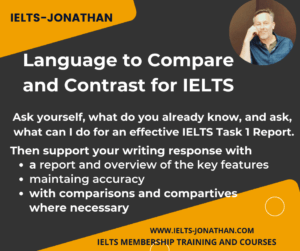
If you want to achieve a higher band score in IELTS Task 1 writing, effective use of comparison and contrasting language is one of the vital language skills you need to master.
It’s is not enough to simply report what you see in a chart, table or graph.
Being able to accurately report differences in key details helps the examiner award a mark in both Task Achievement, Grammar and Vocabulary.
Comparing and contrasting can help in this respect.
If you want to increase your IELTS band score further and impress the examiner, try to vary your language and provide a number of structures when reporting the information you see .

This can be demonstrated by using a number of comparing and contrasting language structures and variations.
You need to do this accurately so it’s important to understand how some words collocate and others do not.
For example, saying ‘ The USA consumed the highest of electricity in 2011′ is not correct because something is missing and this can affect your score.
In contrast, writing ‘ The USA consumed the highest volume of electricity in 2011′ demonstrates to the examiner that you have a good range of vocabulary and an awareness of using language correctly .
For example, the examiner can see you understand that in this example, ‘ the highest + amount/volume + of electricity’ is needed to make an accurate collocation .
So, to score well you not only need to notice and report comparisons and contrast , but do this accurately too.
So I have summarised the most commonly used ways of comparing and contrasting which are suitable for IELTS TASK 1 writing.
These can be incorporated into your writing as needed as long as you have practised how to use these phrases accurately.
Using comparative and superlative adjectives
The simplest way to compare is to adjectives.
These are quite easy to form although there are some irregular patterns that are worth knowing.
Remember, some adjectives requires a particular grammar construction to be accurate.
You can use these adjectives in a number of effective ways, for example as
As a statement
The figure was high . In the 2020, the number of people who worked from home was very high .
As a comparison
The figure was higher than (another figure). In 2021, the figures were lower than in the previous decade.
As a contrast
The figure was the highest . By the end of the period, this figure was the highest .
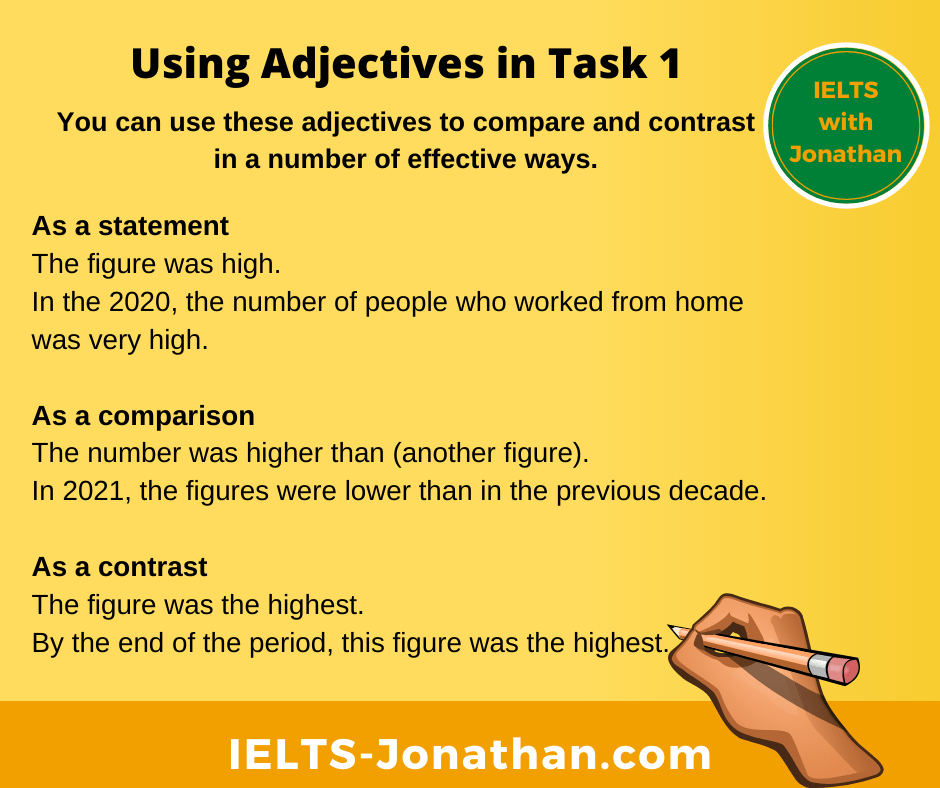
Other simple examples of comparative and superlative language you can look at are:
Sales were lower in 1996 than 1997. Sales were low in the period 1998 to 2001.
The lowest amount of energy was consumed in June.
The cost of imports was more expensive in the winter.
The most expensive imports for the period were in winter.
Using Transition words
Transitioning or s ignalling words are another good way of highlight a key feature in a report.
T hese words link an idea to another, show a connection , or a comparison or an opposite :
However , in contrast , in comparison , on the other hand and similarly are some of the common examples seen in IELTS.
The USA consumed the highest volume of electricity in 2011.
Australia, however , used the least amount (of electricity).
In contrast , Australia used the least (amount of electricity).
More Examples:
British people spent just above £1,000,000 on imported brands.
In comparison , this figure was much lower for Italy at £500,000.
It is clear that the majority of Australians spent their holiday abroad.
On the other hand , Italians opted for staying in their country.
It is obvious that the majority of Spanish people prefer to holiday at home.
Similarly , the Italians prefer to holiday at home too.

Using Subordinating Conjunctions
A further method is to use subordinating conjunctions .
This might sound difficult or something you’re unfamiliar with, but you’re probably using basic subordinating connections already.
These types of word connect two different ideas , or independent clauses and ‘ because ‘ is a common example of one. 🙂
In this example, ‘ because ‘ provides the reason for something.
The most frequent examples for comparing and contrasting are:
Although Australia came first for the crime rate in 1980, this rate then dropped dramatically.
Look at how two independent clauses (ideas) can be compared.
It is clear that in 1963 food was the main expense, while 30 years later it was consumer items that came top. Europeans and Americans each comprise 25 % of the total, whereas the figure for Africa is lower, at 10%.

The same as / similar to..
Using other ways of comparison: more/less/ as…as/ similar(to) / the same …as:
More females than males attended gym and fitness classes in the last decade.
Less electricity was consumed in 2014 due to the increased use of solar technology.
Further ways of comparing examples:
The BMW brand was not as popular as Mercedes in 2015.
Consumption rates in China were very similar to Russia.
Ireland produced the same amount of electricity as Scotland in 2014.
Scotland caught similar amounts of fish as Greenland.
In Conclusion
If you want to increase your IELTS band score and impress the examiner, vary your language when describing a chart, table or graph .
One way this can be simply done is by comparing and contrasting language and variation .
Remember that some words collocate well and others do not and there are irregular grammar constructions too.
Not all IELTS Task 1 questions will give you the opportunity to compare or contrast so it’s important that you read and fully understand the question.
Do this and then decide on your Task Reponse .
I hope you found this article useful and please f eel free to comment and share.
Everything helps! 🙂
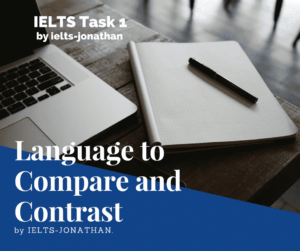
I’m Jonathan
I’ve taught IELTS and University English in more than a dozen universities and schools around the world.
I’m a parent, traveller and passionate about language teaching and helping students achieve their dreams.
Whilst living in Austria or working in Asia, I run IELTS courses to help students get to where they want to be.
If you are serious about IELTS, connect with me to see how I can help you.

The Best Approach to Task 2 Writing
Paragraphing in Task 2 Writing
Strong Arguments for Task 2
Writing the Introduction
Writing a Line of Argument
Cohesion for Task 2 Writing
Writing – Benefits of a Foreign University Education
Reader Interactions
7 May 2021 at 3:45 pm
Nice examples of comparative language, how many times are best to use those phrases?
7 May 2021 at 8:41 pm
With practice you’ll get a feel for using the different structures. Try not to repeat the same structures too much though. It’s quite nice, for variation and to display what you are capable of, to try and use a variety, if possible. Of course, it depends on the information you are reporting in the Task. 🙂
Was this helpful? Leave a comment :) Cancel reply
Let me help you get the ielts result you need.
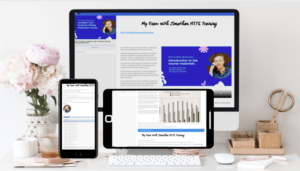
JUST WRITING FEEDBACK

Speaking Feedback
IELTS TRAINING
IELTS FEEDBACK
YOUR PRIVACY
TERMS AND CONDITIONS
- TOEFL Writing Correction Topics
- OET Course & Mock Test
- Writing Correction
- Speaking Mock Test
- Reading Course
- Listening Practice Tests
- FREE Practice Tests
- OET Writing Correction
- OET Reading Course
- OET Speaking Mock Test
- TOEFL Writing Correction
- PTE Writing Correction
- OET Listening Practice Tests
- OET (Occupational English Test)
- PTE (Pearson Test of English)
- Academic Task 1
IELTS Academic Task 1 Compare & Contrast Guide
- Task 1 Guide
- Table & Bar
- Bar & Pie
- Table & Pie
- Compare Contrast
- Identifying Trends
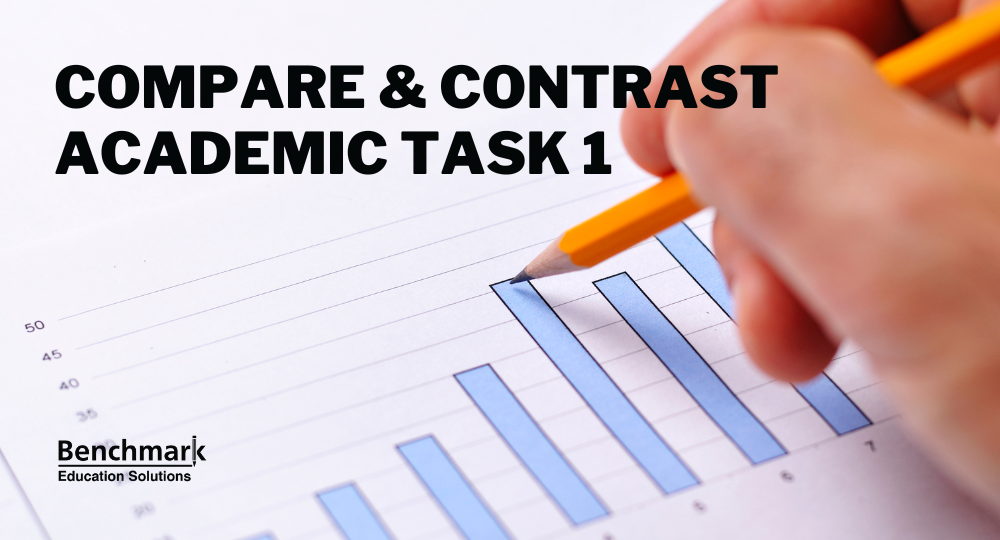
The ability to compare and contrast is important in both the speaking and writing sections of the IELTS exam and can help you to improve your score in Grammatical range and accuracy and Lexical Resource . In this guide, we will look at different grammatical structures and language to help you compare and contrast effectively in the IELTS Academic test.
Table of Contents
1.1 comparatives and superlatives, 1.2 qualifying comparisons, 1.3 comparing similar/opposite figures, 1.4 subordinate clauses, 1.5 transition words, 2.1 adverbs, 2.2 comparing things that are the same/similar, 2.3 unusual vocabulary, 2.4 cohesive devices, 1 comp are and contrast in ielts writing.
One of the aims of IELTS writing task 1 is to compare and contrast information given in a graph , chart or diagram . If you want to achieve a higher IELTS band score, you need to use a range of language and grammatical structures accurately.
One way to compare and contrast is to use comparatives and superlatives .
Let’s quickly look at the rules for how to form comparatives and superlatives:
Here are some examples for the bar chart below:

- Cappuccinos are more popular in Club coffee than Espresso Express.
- Americanos are less popular in Espresso Espresso than Club coffee.
- Cafe lattes are the most popular hot drinks overall.
- Caramel lattes are the least popular beverage in Club Coffee.
Comparatives and superlatives can also be used in any IELTS Writing Task 2 essay , for example:
- In recent years, it has become much more common for students to complete their degree overseas instead of their home country.
- It is argued that regional and community action is more effective than global efforts.
- Having more money and less free time is better than earning less money and having more free time.

You can also modify your comparative phrases even further. See our examples in bold below:
Americanos were a lot more popular than espressos.
The country’s GDP was much higher in 1992 than 2000.
France produced much less energy than Germany in 2009.
There were slightly less visitors to the UK in 1979 than 1980.
The Children’s charity received far more money in 2016 than 2017.
Encouraging cycling is a far more effective way of reducing pollution than punishing drivers.
NEgative news stories are much more common than positive reporting.
Even if you are given numbers that are almost the same in writing task 1, you can still use comparative language such as:
- almost as … as
- not quite as … as
- nearly as … as
- Just as many cars as vans were hired in 2000.
- The number of people that emigrated to the USA in 2009 was almost as high as the number to the UK.
- The number of vehicle thefts in 2000 was not quite as high as it was in 2001.
- Travelling by bike was nearly as popular as travelling by car in the UK in 2018.
And if you are given figures that are drastically different , you can use the following phrases to create a contrast:
- Not nearly as …. as
- Nowhere near as … as
- half as … as
- The proportion of monthly income spent on entertainment was not nearly as high as housing.
- The percentage of women in poverty of women aged 45-54 was nowhere near as high as women aged 18-24.
- Half as many history books as fiction books were borrowed from the library in 2014 than 2018.
Subordinate clauses are another way to compare and contrast information, as well as increase your grammatical range and coherence in IELTS Writing Tasks 1 and 2
Subordinate clauses joined to the main clause using a subordinating conjunction .
Here are some suitable subordinating conjunctions you could use:
- Even though
- Although going to the gym is good for your health, it is not effective without a balanced diet.
- While English was the most popular subject in 2020, Economics was even more popular in 2021.
- Even though most students pass their exams, many still choose to travel abroad and take a gap year.
Transition words, also known as cohesive devices , are another way to compare and contrast.
Here’s a list of useful cohesive devices to compare and contrast:
- In contrast
- In the same way
- Nevertheless
- On one hand
- On the other hand
- Many actors are often followed by the press. Likewise, reality TV stars often report being hounded by paparazzi.
- One one hand , renting your home instead of buying it can be more beneficial as the landlord is responsible for repairs. On the other hand , you will not be able to pass on the house to your children in the future.
- It is argued that people should eat a plant-based diet rather than eating meat as it is healthier.
2. Compare and Contrast in IELTS Speaking
Comparing and contrasting is not only important in writing but also the IELTS speaking section of the test, especially parts 2 and 3 where you have more time to develop your answers.
You can comparing people, places and things in any part of the speaking exam using the following structures:
- A is similar/different to B because …
- A is similar/different to B in that …
- Modern art is different to traditional art forms because you often need to interpret modern artwork in your own way.
- My hometown is similar to where I live now in that both are busy cities with a great nightlife.
You could also use a range of adverbs such as:
- totally/strikingly/ distinctly different
- slightly/rather/subtly different
- My highschool experience was distinctly different from my time at university.
- My daily routine today is only subtly different from a few years ago.
- It is quite common for people to choose tea over coffee in my country.
Even if you have two things that are similar, you can still use language to highlight the similarities. Here are just some ways you can do this:
- A is as reliable as B
- A is identical to B
- A is the same as B
- Electric vehicles are as reliable as petrol cars.
- The replica of the Eiffel tower in my city is identical to the original in Paris.
- The level of pollution in London is the same as in other large cities.
To increase your range of IELTS vocabulary and your score in Lexical resources, you should try to include more unusual words and phrases in your answers. Here are some examples linked to comparing and contrasting:
- A is a far cry away from B
- A is worlds apart from B
- A and B are poles apart
- A is in a different league to B
- Alaska is a far cry away from Florida, it’s so much colder and far less populated.
- Australia is worlds apart from Berlin, there are so many cultural differences especially when it comes to the food.
- My mother and I are poles apart in personality, she is far more outgoing than I am.
- My brother is in a different league to me when it comes to musical ability, he has been composing songs since a very early age.
As with writing, you can also use cohesive devices or IELTS transition words in the speaking section to compare and contrast, for instance:
- On the contrary
- Children should study art at school because it encourages their creativity. Likewise , they should also be encouraged to take up a musical instrument.
- Governments should take responsibility for the food children eat at school. On the other hand , it could also be argued that students should have the freedom to make their own decisions.
Leave a Reply Cancel reply
Your email address will not be published. Required fields are marked *
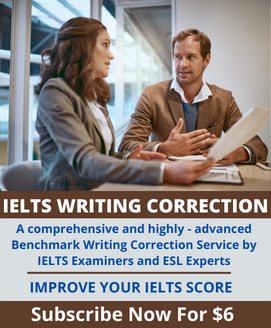
- ielts writing
- ielts listening
- ielts speaking
- ielts reading
- ielts practice test
- IELTS Sample Reports
- IELTS Sample Essays
- IELTS Sample Letters
- IELTS Vocabulary
Exam Updates & Tips!
Signup for preparation and special offers!
You have successfully joined our subscriber list.

Press ESC to close
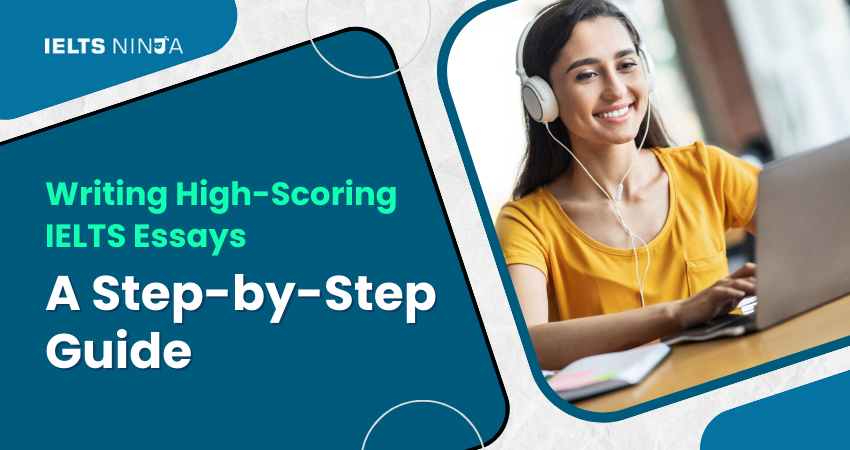
Writing High-Scoring IELTS Essays: A Step-by-Step Guide
Writing great IELTS essays is essential for success. This guide will give you the tools to craft high-scoring essays. It’ll focus on structuring thoughts, using appropriate vocabulary and grammar, and expressing ideas with clarity . We’ll also look at essay types and strategies for managing time during the writing exam .
Practice is key . Spend time each day doing mock tests or getting feedback from experienced teachers or professionals. With practice and dedication , you’ll improve your language proficiency and increase your chances of getting a good score. Good luck!
Understanding the IELTS Essay Task
To excel in the IELTS essay task, equip yourself with a solid understanding of its requirements. Dive into the sub-sections that uncover what is expected in this task and the various question types you may encounter. Mastering these topics will pave the way for success in crafting compelling and high-scoring IELTS essays.
What is expected in the IELTS essay task
The IELTS essay task requires applicants to demonstrate their writing abilities in a certain timeframe . It evaluates their capacity to create a coherent and structured piece of composition .
A clear thesis is a must. It should be succinct, conveying the primary thought of the essay . Also, there should be a logical structure including an introduction, body paragraphs, and conclusion. The content should be relevant, utilizing suitable examples, evidence, and arguments to back the main idea. Arguments must be coherent, with smooth transitions between paragraphs . Plus, formal language, correct grammar, and accurate syntax must be used.
Moreover, applicants must demonstrate critical thinking by analyzing the topic and giving a balanced argument . Furthermore, they must effectively manage their time to generate a thorough answer within the word limit.
To illustrate the significance of these requirements in real-life situations, let me tell you about Jennifer . She was an aspiring nurse from Brazil taking the IELTS test . At first, she found it hard to handle the essay task. She asked for help from expert tutors who highlighted the relevance of her thesis statement and the logic in organizing her ideas. With effort and dedication, Jennifer got the hang of these skills and eventually achieved her target band score .
The types of questions asked in the IELTS essay task
The IELTS essay task covers multiple types of questions. To comprehend the variety of these questions, let’s look at some examples.
To do well, you need to prepare and practice for each type. Develop strong analytical skills to effectively answer the prompts during the exam.
Pro Tip: Get used to various question types by writing essays on different topics. This will help you adjust and boost your performance.
Descriptive questions
It’s essential to comprehend the IELTS Essay Task. This section focuses on descriptive questions . To illustrate this info effectively, use a table with suitable columns. Unique details enhance our understanding. To sharpen essay writing abilities, certain tips are useful. For instance, practice time management and create a clear structure . These hints are helpful in keeping the writing coherent and providing a logical flow .
Also Read: 10 Must-Follow IELTS Reading Tips and Tricks to Boost Your Band Score
Argumentative questions
Queries that need a thorough analysis and a display of multiple perspectives on a given topic are called argumentative questions .
They come in different types, such as:
- Cause and Effect (e.g. What are the consequences of using social media?)
- Pros and Cons (e.g. Should zoos be forbidden?)
- Agree or Disagree (e.g. Is homework essential for students?).
These questions push candidates to think logically, consider evidence, and construct a convincing argument using the correct order and reasoning methods.
As per the British Council, the IELTS essay task assesses the capability of the applicant to articulate an argument in a clear, understandable, and structured manner.
Advantages and disadvantages questions
Advantages and disadvantages questions require a balanced overview of both the positive and negative perspectives. Here is a summary of these questions:
It is important to note that advantages and disadvantages questions offer the opportunity to show understanding by talking about diverse points of view. Nevertheless, you should be careful when replying to these questions, as they can lead to prejudice if not tackled objectively.
Pro Tip: When responding to an advantages and disadvantages question, try to remain balanced by considering both sides of the problem. This will help you create an in-depth reply.
Problem and solution questions
Problem and solution questions demand the test-taker to figure out a problem and suggest successful solutions. Here are 6 tips to help you excel in this IELTS essay type:
- Name the problem precisely: Start by accurately stating the dilemma you will discuss in your essay.
- Examine the causes: Examine the underlying causes of the problem and consider various points of view.
- Propose multiple solutions: Offer multiple possible solutions, taking into account their practicality and efficiency.
- Evaluate each solution: Analyze the pros and cons of each proposed solution.
- Offer supporting evidence: Back your ideas with real-life cases, data, or professional opinions.
- Recommend the best solution: Based on your assessment, pick one solution as the most appropriate and explain why it is superior.
Also, remember to follow these hints when responding to problem and solution questions:
- Think about short-term and long-term effects of applying each solution.
- Prioritize realistic and feasible solutions over idealistic ones.
- Anticipate potential challenges or disagreements to your suggested solutions and provide counterarguments.
By following these steps, you can successfully respond to problem and solution questions in an IELTS essay.
Analyzing the Essay Question
To analyze the essay question effectively in “Writing High-Scoring IELTS Essays: A Step-by-Step Guide,” focus on breaking it down, identifying key terms and instructions, and formulating a thesis statement. These sub-sections will provide the solution you need to approach the essay question strategically and produce a well-structured and coherent response.
Breaking down the essay question
Let’s break down an essay question with a table. The table has elements, description, topic, scope, task, and subtasks .
We can use this table to plan and structure our response. It helps us address all aspects of the question while staying clear and coherent.
Here are some tips for breaking down an essay question:
- Read and understand it. Look for keywords that give clues.
- Identify the main topic.
- Find out the scope.
- Analyze the task.
- Break down subtasks.
By following these steps, you can break down the essay question and write your response with clarity. Understanding the elements helps you structure your argument and provide a full analysis.
Identifying key terms and instructions
When analyzing an essay, it’s key to recognize key terms and instructions. This allows us to know what is being asked and how to approach the topic. We can do this by:
- Reading the question thoroughly.
- Looking for important words.
- Finding out the meanings of any unfamiliar terms.
- Understanding the instructions.
- Noting limitations or qualifiers.
- Setting boundaries for what should be included or excluded.
Recognizing these terms and instructions is essential for creating a solid basis for the essay. Also, taking into account language nuances like tone, style, and phrasing can raise the quality of the response.
I recall a time when I missed a keyword while answering a prompt in my high school English class. Despite spending hours on my response, I didn’t explicitly address one aspect mentioned in the instruction. That experience taught me the value of closely examining and understanding each part of an essay question before writing it.
Formulating a thesis statement
Creating a thesis statement requires careful thinking and consideration. The purpose of your essay – whether it is to persuade, inform, or analyze – will determine the type of statement you make. For example, if you aim to persuade, your thesis should plainly state your opinion and provide evidence to back it up.
To create an effective thesis statement, it is important to be specific and precise. Avoid making foggy or wide statements that are unclear. Instead, focus on making an exact statement or argument. This will help guide your essay and give it a clear purpose.
When forming your thesis statement, consider counterarguments. Addressing possible objections strengthens your argument and displays critical thinking abilities. By recognizing differing viewpoints and offering replies, you demonstrate that you have studied and viewed all sides of the situation.
In addition, a great thesis statement should be debatable. It should start a conversation and attract the reader. Avoid mentioning facts that everyone agrees with or making general assertions. Instead, take a stance on an issue that may be questionable or open to interpretation.
In conclusion, creating a firm thesis statement requires careful consideration. Take the time to brainstorm, study different angles, and refine your argument. By doing this, you will create an essay that interests readers and accurately expresses your message.
Planning and Organizing the Essay
To plan and organize your IELTS essay effectively, turn to ‘Planning and Organizing the Essay.’ Create an outline, brain dump ideas, and arrange them logically. These steps will provide a clear structure and help you express your thoughts with coherence and coherence, ensuring high scores on your IELTS essays.
Creating an outline
Thesis Statement: Outlining is a valuable writing technique that has been used since ancient times. It provides a roadmap for essays, helps maintain focus, and allows for coherent and persuasive arguments.
Paragraph 1:
- Introduction to outlining as a writing technique
- Definition of outlining and its purpose
- Explanation of how outlining structures thoughts in an organized way
- Importance of outlining in communicating arguments coherently and persuasively
Paragraph 2:
- Historical perspective on the use of outlining
- Mention of Aristotle and his belief in the effectiveness of outlining
- Reference to Leonardo da Vinci’s use of outlines when writing
- Reinforcement of the timeless importance of outlining
Paragraph 3:
- Consideration of the audience when creating an outline
- Importance of tailoring the structure to the audience’s knowledge level
- Inclusion of explanations or background information as necessary
- Discussion of addressing counterarguments or opposing views in the outline
Conclusion:
- Summary of the benefits and significance of outlining
- Reiteration of its role in structuring thoughts, maintaining focus, and presenting persuasive arguments
- Encouragement for writers to utilize outlining as a valuable tool in their writing process
brain dumping ideas
Brain dumping ideas is jotting down all thoughts about a topic or subject quickly. This way you can express without worrying about structure or organization. To make the most of this technique, consider these four points:
- Dedicate time and space to brainstorming. Find a quiet environment with no distractions.
- Grab pen and paper or open a blank document. Write any ideas that come to mind, even small ones.
- Review what you have written. Look for patterns and connections.
- Organize your thoughts into categories or themes.
Remember, brain dumping is not a final product. It’s a tool for creativity. Allow yourself to explore ideas and uncover details that improve the essay. Here are more suggestions:
- Go beyond the obvious ideas. Think outside the box.
- Use mind mapping and visual aids to represent thoughts.
- Discuss ideas with peers or mentors.
- Take breaks if you feel overwhelmed.
Arranging ideas logically
For illustrating the importance of arranging thoughts logically, let’s use a table. It demonstrates multiple organizational patterns:
Now let’s discuss extra details. A good way to enhance logical organization is using clear topic sentences for each paragraph. These sentences act as signposts. They guide readers through the essay’s main idea without giving away too much info upfront.
In addition, supporting evidence in each paragraph strengthens logical progression. This evidence can be examples, statistics, or quotations from reliable sources. These substantiate your statements.
Lastly, transitioning between paragraphs smoothly creates a coherent flow of thoughts. Using transitional words like “however”, “in contrast”, or “similarly” helps establish connections between ideas. This avoids abrupt changes of topics.
Writing the Introduction
To write a high-scoring IELTS essay, start your introduction with a strong hook that grabs the reader’s attention. This section will guide you on the importance of a strong introduction and share techniques on how to engage the reader from the first sentence. Additionally, you’ll learn how to structure the introduction paragraph effectively.
The importance of a strong introduction
Writing a strong introduction is essential. It sets the tone for an article and draws readers in. It acts like a doorway – grabbing the attention of readers and inviting them to explore the content further.
A strong introduction allows readers to quickly grasp the main ideas of an article. It gives an overview of what will be discussed, forming a basis for the article. Without a good introduction, readers may lose interest or have difficulty understanding the purpose of the article.
Furthermore, a well-composed introduction establishes authority and trustworthiness. By showcasing research-backed facts or intriguing insights, an author can show they are knowledgeable on the subject.
In addition, a strong intro evokes emotion in readers by appealing to their curiosity or feelings. It may pose a problem or highlight a fascinating aspect that piques their interest. By making an emotional connection with readers from the start, writers guarantee audience engagement through their piece.
Now let’s look at some unique details about introductions. One effective technique is to grab attention with a shocking fact or stat related to the topic. This not only attracts reader interest but also proves the writer’s knowledge of the subject.
Another technique is to use storytelling elements in introductions. Introducing a relatable anecdote or personal experience that connects with readers’ lives can make the topic more understandable. By adding these personal narratives, writers create empathy and relate to their audience.
Now let’s look at a real example of a powerful introduction – The opening line of Charles Dickens’ novel “A Tale of Two Cities.” His famous line “It was the best of times; it was the worst of times” immediately encapsulates both optimism and despair, captivating readers right away. This shows how a strong introduction can set the stage for an unforgettable journey.
Remember, a powerful introduction can make or break an article. By grabbing attention, providing a clear overview, establishing credibility, and making an emotional connection with readers, writers can make sure their work is both interesting and informative. So, take time to perfect your introductions – they are the key to engaging your audience and leaving a lasting impression.
How to grab the reader’s attention
- Start with an intriguing fact or a thought-provoking question. This will get the reader’s attention.
- Introduce the topic and show why it’s important. Keep it concise and focused.
- State your main point or argument. Give the reader a roadmap.
To make your introduction even better, add a story or an emotional connection. This will create an instant bond and keep them hooked.
Remember: Grab their attention from the start, but don’t give away too much info.
Pro Tip: Get feedback on your intro before finalizing it. Revise it as needed.
Structuring the introduction paragraph
Engage your reader with an interesting story or statistic. Then, outline your main points concisely and without jargon. Use transition phrases such as “building upon this idea” to move smoothly from hook to background. Finish off with a clear thesis statement. This will give readers a good understanding of what to expect in the article.
Developing Body Paragraphs
To develop strong body paragraphs in your IELTS essays, focus on crafting clear topic sentences and providing supporting details. Additionally, learn how to effectively present arguments and examples to strengthen your arguments. Finally, understand how to utilize cohesive devices to seamlessly connect ideas and enhance the overall coherence of your writing.
Topic sentences and supporting details
Topic Sentences and Supporting Details
Topic sentences provide the main idea of a paragraph. To explain them, it’s important to include relevant details.
To illustrate this concept, let’s look at a table. It shows how topic sentences and supporting details work together.
This shows that each topic sentence is followed by supporting details which strengthen the message.
Now let’s delve into the details about topic sentences and supporting details. They should be presented in a logical order. The details should also be relevant and specific to the main idea. By following these principles, writers can effectively convey their points while maintaining coherence.
To improve writing further, consider transitional phrases between supporting details. Also, acknowledge counterarguments within the paragraphs. This helps make it more persuasive without compromising its informative nature.
Providing arguments and examples
Let’s explore how to give strong arguments and examples. Imagine a neat table with data that supports our view. There should be columns of factual numbers to back up the argument. This visual aid is a great way to convince readers.
We also need to include details that haven’t been discussed before. These details add more to our writing, so it looks professional. By looking into lesser-known aspects, we can make our arguments better.
So why wait? Using evidence in your writing will make readers emotional. It will also make them feel like they have to join your perspective. Don’t be scared to use persuasive body paragraphs. Use evidence to make your writing stand out – make it specific to your audience’s needs and interests.
Using cohesive devices to link ideas
Cohesive devices like transitional phrases and linking words can make ideas seamlessly flow. This gives the reader a better understanding of the writer’s thoughts.
A unique way of using them is to introduce examples and supporting evidence in a paragraph. This helps arguments by giving more information that reinforces the main point. “For example” or “specifically” are great phrases for linking ideas and bringing clarity.
Pro Tip: Pick the right word or phrase for the intended meaning. Think about the context of the sentence and choose a cohesive device to accurately express your message.
Crafting the Conclusion
To craft a compelling conclusion in your IELTS essays, summarize the main points, restate the thesis statement, and leave a lasting impression. Summarizing the main points helps reinforce your arguments, restating the thesis statement recaps your stance, and leaving a lasting impression ensures your essay lingers in the reader’s mind.
Summarizing the main points
Crafting a powerful conclusion is essential to leave an impression on readers. Here’s how:
- Highlight each point’s importance & impact.
- Show their connection to form a cohesive narrative.
- Explain how they contribute to the overall message.
- End with a call to action or thought-provoking final remark.
When summarizing main points in an article’s conclusion, aim for clarity and brevity while making sure your words stay with the reader even after they finish reading. Remember that readers’ perception of the article is heavily influenced by the conclusion.
Restating the thesis statement
Have you ever wanted to live a crazier life ? Let’s give it a try! Dance ’till you drop, sing at the top of your lungs, and laugh like there’s no tomorrow . Let loose and have some fun! It’ll be an adventure you won’t soon forget.
Have you ever dreamed of living a wilder life ? Let’s do it! Dance ’til you can’t move, belt out your favorite songs, and laugh with joy . Go for it and have a blast! This will be an adventure you won’t forget anytime soon.
Leaving a lasting impression
It is key to craft a lasting impression. Get to the point, use strong words and visuals. End with a call-to-action.
Customize your message to cater to the needs of your audience. Speak with the right tone and style for engagement.
Winston Churchill is a prime example of leaving a lasting impression. His speeches during World War II inspired nations. Even after his death, his words still have an impact.
To leave a lasting impression, be concise. Employ impactful words. Use visual aids. And make a call-to-action. Understand your audience. Draw inspiration from those who have come before. You can make your mark in communication.
Proofreading and Editing
To ensure high-scoring IELTS essays in the section on proofreading and editing, focus on checking for grammar and spelling errors, improving sentence structure and clarity, and ensuring coherence and cohesion. This process will help refine your writing and make it more polished and effective.

Checking for grammar and spelling errors
Proofreading and editing are essential. Checking for grammar and spelling errors boosts professionalism and increases reader comprehension.
Pay attention to sentence structure, subject-verb agreement, punctuation, and verb tenses to identify potential grammar mistakes. Check for run-on sentences and fragments.
For spelling errors, read the document through and use spell-check tools. But, they may not detect homophones or typos.
A great technique is to read the text aloud. It can help spot awkward phrasing and spelling mistakes. It’s a good idea to get another set of eyes to review the work too.
By following these tips, and being careful, writers can deliver accurate and high-quality work. Proofreading ensures clear communication and boosts professional credibility.
Improving sentence structure and clarity
To better your sentence structure & clarity, follow these 6 steps!
- Start with a topic sentence – clearly state the main idea.
- Use active voice instead of passive for concise writing.
- Keep sentences short & simple.
- Use transitions to connect ideas.
- Cut out wordiness.
- Revise & proofread.
Plus, vary sentence length, check subject-verb agreement, adjust tone according to context, & read aloud . Practicing these tips will help you improve your sentences.
In 1928, Virginia Woolf wrote “Orlando,” a modernist masterpiece. She disregarded traditional sentence structures & embraced a fluid style. Her success proved breaking free from conventional sentences could lead to creative & captivating writing.
Ensuring coherence and cohesion
Key aspects for ensuring coherence and cohesion:
- Transition words – help make a smooth transition between ideas and paragraphs.
- Pronouns – like ‘it’, ‘he’, ‘she’ refer back to nouns, creating continuity.
- Repetition – of words or phrases reinforces main ideas.
- Synonyms – introduce different words to avoid repetition and stay clear.
- Logical order – so readers can follow thoughts easily.
To further improve your writing:
- Read out loud – awkward sentences and gaps in flow become clear.
- Use sentence variety – simple, compound and complex sentences.
- Take breaks – get fresh perspectives on improvement areas.
- Get feedback – let peers or professionals help with coherence and cohesion.
These suggestions help readers follow ideas without confusion. They create clear connections and a seamless experience.
Practice and Tips for Success
To improve your performance in IELTS essays, utilize the ‘Practice and Tips for Success’ section. Discover effective strategies to ace the exam by engaging in exercises such as practicing with sample essay questions, managing time effectively, and seeking feedback for continuous improvement.
Practicing with sample essay questions
Analyze the prompt. Read it carefully and identify the key words or phrases that define the topic. Grasping the prompt helps form a focused thesis statement.
Research and gather info. Do thorough research to gather pertinent facts from reliable sources. Make notes and organize them based on arguments or counterarguments.
Plan your essay. Put together an outline or structure before you start writing. This ensures coherence and logical progression of ideas.
Write a draft. Use the notes and outline as a guide and begin writing your essay. Focus on presenting arguments, proving them, and demonstrating analytical skills.
Review and revise. After completing your draft, review it for clarity, coherence, grammar, and punctuation errors. Make the needed changes to strengthen your essay’s content and flow.
Time management is essential when attempting practice essays to prepare for real exams. Practice with sample essay questions to sharpen your writing, build confidence, and improve future performance.
Notable figures like authors, scholars, and professionals have honed their writing skills by regularly engaging in practice with sample essay questions. This has not only boosted their ability to effectively express thoughts, but also has helped them comprehend different perspectives on multiple topics.
Managing time effectively
Don’t let missed opportunities haunt you! Take control of your time and reap the rewards. To maximize your potential for success, start implementing these techniques now:
- Prioritize tasks. Identify most important ones first . This ensures time is spent on activities that have the greatest impact.
- Set goals. Establish clear goals for each day or week . This provides you with a sense of direction and purpose.
- Create a schedule. Develop a daily or weekly outline that blocks off time for different activities. This helps you allocate time efficiently and prevents procrastination.
- Avoid multitasking. Studies show this decreases productivity. Focus on one task at a time to ensure quality work.
Productivity tools such as task management apps or timers can help. Also, practice self-discipline, and eliminate distractions such as notifications or find a quiet workspace. This enhances focus and concentration. Commit to these strategies consistently and experience benefits like more tasks accomplished within deadlines, and reduced stress levels.
Seeking feedback and improvement
Actively search for feedback from mentors, colleagues, and supervisors . Accept criticism as a chance for progress, not personally. Ask for feedback on a project or performance, to get helpful feedback. Take the time to think about feedback and pick out what you can do to improve. Even with positive feedback, keep searching for ways to develop.
Remember, requesting feedback needs openness and humility . Showing you want to learn is a sign of growth.
Pro Tip: Listen closely to feedback, rather than defending yourself. This will help you understand the point of view and make improvements.
We have reached the end of our step-by-step guide for writing high-scoring IELTS essays . Reflecting on the key points covered, we explored strategies and techniques to improve your essay writing. Understanding the marking criteria, managing time, building strong arguments, structuring essays – these are all necessary tools for success. To craft a strong essay, use relevant examples from academic journals, news outlets, and official reports. Demonstrate critical thinking by analyzing perspectives on a topic. Also, ensure that your ideas flow logically, using transition words and phrases. Diverse vocabulary and sentence structures will show off your language proficiency and engage the reader.
It is important to note that practice is key to success in the IELTS exam . Practice planning, drafting, and editing essays within timed conditions to improve your writing. Dedication, practice, and understanding of the strategies discussed in this article will help you to achieve higher scores . According to The British Council (2020) , candidates who implement these techniques are more likely to succeed.
Frequently Asked Questions
FAQ 1: What is the key to writing high-scoring IELTS essays? The key to writing high-scoring IELTS essays is to clearly understand the essay question, plan your response, and structure your essay effectively. Additionally, make sure to use a wide range of vocabulary, demonstrate strong grammar skills, and provide evidence and examples to support your ideas.
FAQ 2: How can I improve my vocabulary for IELTS essays? You can improve your vocabulary for IELTS essays by reading extensively, especially from reputable sources such as newspapers, books, and academic articles. Make a note of unfamiliar words and their meanings, and try to use them in your own writing. Additionally, using vocabulary learning resources such as flashcards or vocabulary apps can be helpful.
FAQ 3: Are there any specific essay structures I should follow? Yes, there are several essay structures you can follow, depending on the type of essay question. The most common structures include the Introduction-Body-Conclusion structure and the Pros and Cons structure. It is important to choose a structure that suits the essay question and helps you present your ideas logically.
FAQ 4: How can I improve my grammar skills for IELTS essays? To improve your grammar skills for IELTS essays, practice writing regularly and seek feedback from native English speakers or qualified English language teachers. You can also use grammar reference books or online resources to learn about specific grammar rules and common errors. Take note of your frequent errors and work on them systematically.
FAQ 5: How long should an IELTS essay be? An IELTS essay should be between 250 and 300 words long. Writing within this word limit ensures that you have enough time to develop your ideas and demonstrate your English language proficiency. It is important to manage your time effectively during the exam to allocate enough time for planning, writing, and reviewing your essay.
FAQ 6: How can I practice for writing high-scoring IELTS essays? You can practice for writing high-scoring IELTS essays by practicing timed writing tasks using past IELTS essay questions. Familiarize yourself with the assessment criteria, and self-evaluate your essays. Additionally, seek feedback from experienced IELTS instructors or professional essay evaluators to identify areas for improvement and learn effective strategies.

Leave a Reply Cancel reply

Share Article:
You might also like

Can I Crack IELTS in a Week?: Strategies to Achieve IELTS Score

Does IELTS Coaching Help Truly in Enhancing Performance?

How to Crack IELTS Exam in 14 Days?: Proven Success Strategies
Other stories, ielts speaking test tips and strategies, top online resources for ielts preparation.
Have a language expert improve your writing
Run a free plagiarism check in 10 minutes, generate accurate citations for free.
- Knowledge Base
- Comparing and contrasting in an essay | Tips & examples
Comparing and Contrasting in an Essay | Tips & Examples
Published on August 6, 2020 by Jack Caulfield . Revised on July 23, 2023.
Comparing and contrasting is an important skill in academic writing . It involves taking two or more subjects and analyzing the differences and similarities between them.
Instantly correct all language mistakes in your text
Upload your document to correct all your mistakes in minutes

Table of contents
When should i compare and contrast, making effective comparisons, comparing and contrasting as a brainstorming tool, structuring your comparisons, other interesting articles, frequently asked questions about comparing and contrasting.
Many assignments will invite you to make comparisons quite explicitly, as in these prompts.
- Compare the treatment of the theme of beauty in the poetry of William Wordsworth and John Keats.
- Compare and contrast in-class and distance learning. What are the advantages and disadvantages of each approach?
Some other prompts may not directly ask you to compare and contrast, but present you with a topic where comparing and contrasting could be a good approach.
One way to approach this essay might be to contrast the situation before the Great Depression with the situation during it, to highlight how large a difference it made.
Comparing and contrasting is also used in all kinds of academic contexts where it’s not explicitly prompted. For example, a literature review involves comparing and contrasting different studies on your topic, and an argumentative essay may involve weighing up the pros and cons of different arguments.
Here's why students love Scribbr's proofreading services
Discover proofreading & editing
As the name suggests, comparing and contrasting is about identifying both similarities and differences. You might focus on contrasting quite different subjects or comparing subjects with a lot in common—but there must be some grounds for comparison in the first place.
For example, you might contrast French society before and after the French Revolution; you’d likely find many differences, but there would be a valid basis for comparison. However, if you contrasted pre-revolutionary France with Han-dynasty China, your reader might wonder why you chose to compare these two societies.
This is why it’s important to clarify the point of your comparisons by writing a focused thesis statement . Every element of an essay should serve your central argument in some way. Consider what you’re trying to accomplish with any comparisons you make, and be sure to make this clear to the reader.
Comparing and contrasting can be a useful tool to help organize your thoughts before you begin writing any type of academic text. You might use it to compare different theories and approaches you’ve encountered in your preliminary research, for example.
Let’s say your research involves the competing psychological approaches of behaviorism and cognitive psychology. You might make a table to summarize the key differences between them.
Or say you’re writing about the major global conflicts of the twentieth century. You might visualize the key similarities and differences in a Venn diagram.

These visualizations wouldn’t make it into your actual writing, so they don’t have to be very formal in terms of phrasing or presentation. The point of comparing and contrasting at this stage is to help you organize and shape your ideas to aid you in structuring your arguments.
When comparing and contrasting in an essay, there are two main ways to structure your comparisons: the alternating method and the block method.
The alternating method
In the alternating method, you structure your text according to what aspect you’re comparing. You cover both your subjects side by side in terms of a specific point of comparison. Your text is structured like this:
Mouse over the example paragraph below to see how this approach works.
One challenge teachers face is identifying and assisting students who are struggling without disrupting the rest of the class. In a traditional classroom environment, the teacher can easily identify when a student is struggling based on their demeanor in class or simply by regularly checking on students during exercises. They can then offer assistance quietly during the exercise or discuss it further after class. Meanwhile, in a Zoom-based class, the lack of physical presence makes it more difficult to pay attention to individual students’ responses and notice frustrations, and there is less flexibility to speak with students privately to offer assistance. In this case, therefore, the traditional classroom environment holds the advantage, although it appears likely that aiding students in a virtual classroom environment will become easier as the technology, and teachers’ familiarity with it, improves.
The block method
In the block method, you cover each of the overall subjects you’re comparing in a block. You say everything you have to say about your first subject, then discuss your second subject, making comparisons and contrasts back to the things you’ve already said about the first. Your text is structured like this:
- Point of comparison A
- Point of comparison B
The most commonly cited advantage of distance learning is the flexibility and accessibility it offers. Rather than being required to travel to a specific location every week (and to live near enough to feasibly do so), students can participate from anywhere with an internet connection. This allows not only for a wider geographical spread of students but for the possibility of studying while travelling. However, distance learning presents its own accessibility challenges; not all students have a stable internet connection and a computer or other device with which to participate in online classes, and less technologically literate students and teachers may struggle with the technical aspects of class participation. Furthermore, discomfort and distractions can hinder an individual student’s ability to engage with the class from home, creating divergent learning experiences for different students. Distance learning, then, seems to improve accessibility in some ways while representing a step backwards in others.
Note that these two methods can be combined; these two example paragraphs could both be part of the same essay, but it’s wise to use an essay outline to plan out which approach you’re taking in each paragraph.
Prevent plagiarism. Run a free check.
If you want to know more about AI tools , college essays , or fallacies make sure to check out some of our other articles with explanations and examples or go directly to our tools!
- Ad hominem fallacy
- Post hoc fallacy
- Appeal to authority fallacy
- False cause fallacy
- Sunk cost fallacy
College essays
- Choosing Essay Topic
- Write a College Essay
- Write a Diversity Essay
- College Essay Format & Structure
- Comparing and Contrasting in an Essay
(AI) Tools
- Grammar Checker
- Paraphrasing Tool
- Text Summarizer
- AI Detector
- Plagiarism Checker
- Citation Generator
Some essay prompts include the keywords “compare” and/or “contrast.” In these cases, an essay structured around comparing and contrasting is the appropriate response.
Comparing and contrasting is also a useful approach in all kinds of academic writing : You might compare different studies in a literature review , weigh up different arguments in an argumentative essay , or consider different theoretical approaches in a theoretical framework .
Your subjects might be very different or quite similar, but it’s important that there be meaningful grounds for comparison . You can probably describe many differences between a cat and a bicycle, but there isn’t really any connection between them to justify the comparison.
You’ll have to write a thesis statement explaining the central point you want to make in your essay , so be sure to know in advance what connects your subjects and makes them worth comparing.
Comparisons in essays are generally structured in one of two ways:
- The alternating method, where you compare your subjects side by side according to one specific aspect at a time.
- The block method, where you cover each subject separately in its entirety.
It’s also possible to combine both methods, for example by writing a full paragraph on each of your topics and then a final paragraph contrasting the two according to a specific metric.
Cite this Scribbr article
If you want to cite this source, you can copy and paste the citation or click the “Cite this Scribbr article” button to automatically add the citation to our free Citation Generator.
Caulfield, J. (2023, July 23). Comparing and Contrasting in an Essay | Tips & Examples. Scribbr. Retrieved April 11, 2024, from https://www.scribbr.com/academic-essay/compare-and-contrast/
Is this article helpful?

Jack Caulfield
Other students also liked, how to write an expository essay, how to write an argumentative essay | examples & tips, academic paragraph structure | step-by-step guide & examples, what is your plagiarism score.
- IELTS Scores
- Life Skills Test
- Find a Test Centre
- Alternatives to IELTS
- Find Student Housing
- General Training
- Academic Word List
- Topic Vocabulary
- Collocation
- Phrasal Verbs
- Writing eBooks
- Reading eBook
- All eBooks & Courses
- IELTS Writing Task 2
- IELTS Essay
How to Write an IELTS Essay
In this introductory lesson you will find some guidance on how you should write an IELTS essay .
There are then more lessons on the following pages for different types of essay and different questions, with lots of tips and strategies for achieving a high score.
You can also watch a video of this lesson:

Essay Types
It is important to learn about IELTS essays because there are different essay types, and these will require different ways to answer them.
However, as you will see from the guidance on this page, they can all follow the same basic structure.
These are some of the types of IELTS essays you can get in the test:
- Agree / disagree
- Discuss two opinions
- Advantages & disadvantages
- Causes (reasons) & solutions
- Causes (reasons) & effects
- Problems & solutions
Not every essay will fit one of these patterns, but many do.
You may get some of these tasks mixed up. For example, you could be asked to give your opinion on an issue, and then discuss the advantages or disadvantages of it.
The golden rule is to ALWAYS read the question very carefully to see exactly what you are being asked to do.
The second lesson explains more about analysing essay questions.
How do I Write an IELTS Essay?
In order to answer this, lets first look at a sample question:
You should spend about 40 minutes on this task.
Write about the following topic:
In the last 20 years there have been significant developments in the field of information technology (IT), for example the World Wide Web and communication by email. However, these developments in IT are likely to have more negative effects than positive in the future.
To what extent do you agree or disagree?
Give reasons for your answer and include any relevant examples from your own experience or knowledge.
Write at least 250 words.
An IELTS essay is structured like any other essay; you just need to make it shorter. There are three key elements:
- Introduction
- Body Paragraphs
We will look at each of these in turn, using the essay question above as an example.
1) Introduction
You should keep your introduction for the IELTS essay short. Remember you only have 40 minutes to write the essay, and some of this time needs to be spent planning. Therefore, you need to be able to write your introduction fairly quickly so you can start writing your body paragraphs.
You should do just two things:
- State the topic of the essay, using some basic facts (that you may be able to take from the question)
- Say what you are going to write about
Here is an example introduction for the above essay question about IT:
The last two decades have seen enormous changes in the way people's lives are affected by IT, with many advances in this field. However, while these technological advances have brought many benefits to the world, I strongly believe that these developments in IT will result in more negative impacts than positive.
As you can see, the first sentence makes sure it refers to the topic (IT) and uses facts about IT taken from the question. Note that these are paraphrased - you must not copy from the rubric!
The second part then clearly sets out the what the essay will be about and confirms the writers opinion (some questions may not ask for your opinion, but this one does). The writer clearly agrees as he/she thinks there will be more negative impacts.
View this lesson for more advice on writing IELTS essay introductions.
2) Body Paragraphs
For an IELTS essay, you should have 2 or 3 body paragraphs - no more, and no less.
For your body paragraph, each paragraph should contain one controlling idea, and have sentences to support this.
Lets look at the first paragraph for the essay about IT. The essay is about the benefits and drawbacks of IT, so these will need to be discussed in separate paragraphs.
Here is the first body paragraph:
On the positive side, email has made communication, especially abroad, much simpler and faster. This has resulted in numerous benefits for commerce and business as there is no need to wait weeks for letters or take time sending faxes, which was the case in the past. Furthermore, the World Wide Web means that information on every conceivable subject is now available to us. For example, people can access news, medical advice, online education courses and much more via the internet. These developments have made life far easier and more convenient for many.
The controlling idea in this first paragraph is the 'benefits of IT', and there are two supporting ideas, which are underlined. No drawbacks are discussed as the paragraph would then lose coherence.
Most of the essay will focus on the negative aspects of IT, as the writer says there are more negative effects in the introduction. So the next two paragraphs are about these.
The topic sentence in the next paragraph therefore tells us we are changing the focus to the negative points:
Nevertheless, the effects of this new technology have not all been beneficial. For example, many people feel that the widespread use of email is destroying traditional forms of communication such as letter writing, telephone and face-to-face conversation. This could result in a decline in people's basic ability to socialize and interact with each other on a day-to-day basis.
The final body paragraph gives the last negative effect:
In addition, the large size of the Web has meant that it is nearly impossible to regulate and control. This has led to many concerns regarding children accessing unsuitable websites and the spread of computer viruses. Unfortunately, this kind of problem might even get worse in the future at least until more regulated systems are set up.
3) Conclusion
The conclusion only needs to be one or two sentences, and you can do the following:
- Re-state what the essay is about (re-write the last sentence of your introduction in different words)
- Give some thoughts about the future
Here is an example:
In conclusion, developments in IT have brought many benefits, yet I believe that these are outweighed by the drawbacks. In the future these will need to be addressed if we are to avoid damaging impacts on individuals and society.
The Full IELTS Essay
The last two decades have seen enormous changes in the way people's lives are affected by IT, with many advances in this field. However, while these technological advances have brought many benefits to the world, I strongly believe that these developments in IT will result in more negative impacts than positive.
Nevertheless, the effects of this new technology have not all been beneficial. For example, many people feel that the widespread use of email is destroying traditional forms of communication such as letter writing, telephone and face-to-face conversation. This could result in a decline in people's basic ability to socialize and interact with each other on a day-to-day basis.
(290 Words)
The IELTS essay introduction talks in general about the increasing use of IT, thus introducing the topic well. The thesis then clearly sets out the writers opinion.
The following paragraph mentions the present benefits of these developments, but the opening sentence in the third paragraph is a qualifying statement (Nevertheless, not all the effects... ), so the writer can now focus on the negative elements.
The fourth paragraph provides two other negative examples (lack of regulation, viruses). Both paragraphs suggest that these problems will continue in the future.
The essay concludes with a clear opinion that agrees with the statement.
Overall, it is a well-balanced text that mentions the present situation ( ...this has made life.. .) but importantly, also refers to the future of IT (. ..likely to increase..., might get worse. ..).
Now you know the basics of writing an IELTS Essay, you can go on and look at further sample essays or if you prefer, check out the next lessons for Writing Task 2.
More Task 2 IELTS Lessons:

Improving Writing Coherence for IELTS essays
25% of the writing grade is on how you organise your essay so this lesson shows you how to improve your writing coherence.
Requirements for IELTS Band 7 in Writing
Getting to an IELTS Band 7 is a struggle for many candidates. This lesson explains exactly what you have to do to reach this band score.

IELTS Task Response - 25% of your essay grade
The IELTS Task Response criteria in the scoring makes up 25% of your band score for your essay.
Thesis Statement Tips for IELTS Essays
Your thesis statement in an IELTS essay should be written quickly and concisely. Use these tips to do that.
Using Pronouns to Improve IELTS Essay Coherency
Find out how to use pronouns to improve your coherency for IELTS task 2 essays.
Transitional Phrases for Essays
Learn transitional phrases for essays to get a band 7 or higher in your IELTS writing for coherence and cohesion.
IELTS Music Essay: Understanding a Complex Question
An IELTS essay about music is used to show you how to answer a more complex IELTS essay question that does not have a clear 'task' given to you.
Tips on How to Score IELTS Band 8 in Writing and Speaking
To score IELTS Band 8 you need to understand exactly what is in the IELTS Band Descriptors for an 8 for writing and speaking first.
The 3 Types of IELTS Opinion Essays in IELTS
IELTS opinion essays in IELTS can be placed into three types. This lesson explains the different types and how to analyse these essay questions.
IELTS Advantage Disadvantage Essay Tips and Strategies
An advantage disadvantage essay is one type of essay that you may get in the test. This lesson shows how to write a pros cons essay.
Writing an IELTS Essay Introduction
Tips on how to write an introduction for an IELTS essay introduction in a quick and easy way.
How to Identify the Topic of an IELTS Essay Question
In IELTS you must identify the topic of your essay as this is a key to making sure your essay is on topic.
How to Identify the Task in an IELTS Essay
Learn how to identify the task in an IELTS task 2 essay question. This is one of the most important steps in responding to an essay question.
Writing an IELTS Essay Conclusion
The IELTS essay conclusion is the final part of your IELTS essay. This lesson guides you on how to write a conclusion quickly but effectively.
Paragraph Writing for IELTS: Building strong arguments
This paragraph writing lesson provides tips on constructing the best paragraphs for your IELTS essay.
Using Substitution in IELTS to Improve Writing Coherency
You can use substitution in your IELTS essays in order to improve coherency and coherence.

Generating ideas for IELTS essays for writing task 2
Generating ideas for IELTS essays for writing task 2 can be difficult but complex ideas are not expected.
How to use brainstorming and planning to generate essay ideas.
Brainstorming and planning is a key step in developing your IELTS essay. This lesson has tips on how to coming up with ideas and organising them.
Can you use Personal Pronouns in Essays for IELTS?
Learn how to use personal pronouns in essays for IELTS correctly. Can you use "I", "we" and "you"?
IELTS Problem Solution Essay Strategies and Tips
In IELTS problem solution essays you have to discuss a particular issue and present ideas to solve that problem.
Any comments or questions about this page or about IELTS? Post them here. Your email will not be published or shared.
Before you go...
Check out the ielts buddy band 7+ ebooks & courses.

Would you prefer to share this page with others by linking to it?
- Click on the HTML link code below.
- Copy and paste it, adding a note of your own, into your blog, a Web page, forums, a blog comment, your Facebook account, or anywhere that someone would find this page valuable.
Band 7+ eBooks
"I think these eBooks are FANTASTIC!!! I know that's not academic language, but it's the truth!"
Linda, from Italy, Scored Band 7.5

IELTS Modules:
Other resources:.
- All Lessons
- Band Score Calculator
- Writing Feedback
- Speaking Feedback
- Teacher Resources
- Free Downloads
- Recent Essay Exam Questions
- Books for IELTS Prep
- Student Housing
- Useful Links

Recent Articles
Decreasing House Sizes Essay
Apr 06, 24 10:22 AM

Latest IELTS Writing Topics - Recent Exam Questions
Apr 04, 24 02:36 AM

IELTS Essay: English as a Global Language
Apr 03, 24 03:49 PM

Important pages
IELTS Writing IELTS Speaking IELTS Listening IELTS Reading All Lessons Vocabulary Academic Task 1 Academic Task 2 Practice Tests
Connect with us
Copyright © 2022- IELTSbuddy All Rights Reserved
IELTS is a registered trademark of University of Cambridge, the British Council, and IDP Education Australia. This site and its owners are not affiliated, approved or endorsed by the University of Cambridge ESOL, the British Council, and IDP Education Australia.
- What can IELTS do for you
- Ways to take IELTS
- Who accepts IELTS?
- Sample test questions
- IELTS Trial Test
- Understanding your score
- Trust IELTS
- On test day
- Test centres
- IELTS One Skill Retake
- Cancellations, refunds...
- Access arrangements
- Getting and sharing...
- Improving your results
- Academic Institutions
- Why accept IELTS?
- IELTS Scoring
- Compare IELTS
- IELTS for your sector
- Get started with IELTS
- Verifying IELTS results
- Research reports
- Test statistics
- Research funding
- Awards and scholarships
- Previously funded...
- News and Insights
Need help finding something? Enter a search term below

10 steps to writing high-scoring IELTS essays
Date Published
01 February 2023
This article was first published on IELTS.IDP.com
Whether you take the General Training or Academic IELTS test, the second writing task is writing an essay in response to a problem or argument. Here are 10 easy steps, with lots of tips, to guide you on how to write high-scoring essays.
How is the IELTS essay component marked?
Fairness and accuracy are critically important when marking IELTS writing tasks . Your essay will be marked by at least two experienced IELTS examiners on the following criteria:
- Task response - Whether you answered the question fully and supported your answer well.
- Coherence and cohesion - How well you linked your ideas together.
- Lexical resource - Whether you used a wide range of vocabulary correctly and appropriately.
- Grammatical range and accuracy - How many grammatical structures you used accurately and appropriately.
Each of these criteria is worth 25 percent of your total score for the essay writing task. Both of your writing tasks are used to calculate your overall writing band score.
How to write high-scoring essays in 10 easy steps
Step one: plan your time.
The Writing test (consisting of Writing tasks 1 and 2) takes approximately 60 minutes. Plan to spend around 20 minutes on your first task, and 40 minutes on your essay task. A sample plan for your time might be:
- 5 to 10 minutes reading the essay question and planning your answer
- 15 to 20 minutes writing your first draft
- 10 minutes proofreading and editing your essay
How to write a good introduction
Step two: Read the question
While you may be anxious to jump straight into writing, make sure you take the time to carefully read the essay question. If you misunderstand the question, you risk writing an essay that does not address the issues properly which will lower your score.
Top 10 podcasts to help you improve your English
Step three: Highlight the issues to address
There will be multiple issues that you will need to address in your essay. Addressing each issue individually is key to achieving a high essay score. Highlight each individual issue that you will need to address.
The A to Z of IELTS: E is for Essays
Step four: Outline your response
Create an outline of how you will respond to the issues in your essay. This will serve as your ‘blueprint’ when you write your first draft. As a general rule your essay should have:
- An introduction stating what you will talk about
- Two or three body paragraphs , each addressing one issue or idea
- A conclusion summing up what was discussed in the essay
Make sure you note which idea or issue you will address in each paragraph. Check that the issues you highlighted are all accounted for in your outline.
Step five: Expand on your ideas
Write some notes about any key points or ideas you’d like to include in each paragraph. When you’re writing your first draft, these notes will help to make sure you don’t forget any ideas you want to include.
Mind maps to build your vocabulary resource for IELTS
Step six: Plan how you will connect your ideas
Connecting your ideas clearly and correctly is critical to achieving a high essay score. Try to use a range of linking words to make your essay easy to read. You can use connecting devices and phrases to:
List connected ideas
- ‘Firstly, secondly, thirdly’
- ‘Furthermore’
Provide more information
Compare ideas.
- ‘On the other hand’
- ‘Alternatively’
Don’t fall into the trap of trying to put a linking word in every sentence. Essays will score higher when the writer uses linking words only where necessary and appropriate.
Step seven: Write your first draft
Now that you’ve planned your essay, it’s time to write your first draft. Follow the outline you’ve created and expand on the notes and ideas you included there.
- Avoid informal language unless it is appropriate.
- Avoid spelling and grammatical errors where possible.
- Use a mix of sentence structures such as simple sentences, complex sentences and compound sentences.
How to boost your IELTS Writing score
Step eight: Proofread your essay
When you have completed the first draft of your essay, it’s important to proofread it. Read your essay from start to finish.
You can read it silently, but it may help to read it out loud if you can do so without disturbing others. Make a mental note or mark your paper anywhere that you may need to fix an issue.
How to access FREE official IELTS mock tests
Step nine: Edit your essay
Carefully go through the issues you noted while proofreading. Edit or rewrite these until they look and sound correct. Examples of issues and how to edit them may include:
- The sentence is too long. A sentence is probably too long if you need to take a breath in the middle of reading it. Try splitting this up into smaller sentences.
- A sentence sounds strange when you read it out loud. Try using different words or punctuation until it sounds right. It may need to be connected to another sentence.
- The same word appears many times. Think about any other words you could use instead.
There is more than one main idea in each paragraph. Move any unrelated sentences to the correct paragraph. Each paragraph should address one issue only.
IELTS Writing: How to organise your responses
Step 10: Proofread your essay again
After your edits and before submitting your essay , give it one final proofread. Make sure you have:
- Included all the points you highlighted in step three
- Followed your outline from step four
- Used good connecting words from step six
- Fixed any errors or issues in step nine
IELTS Writing: 8 steps towards a band 8
Why choose IELTS?
IELTS is widely recognised by businesses and universities globally, and is the only English language competency test approved by all four of the following countries:
- New Zealand
With convenient computer and paper based test options, your IELTS test can be completed in a way that you’re most comfortable with. If you’re in a hurry, you could even have your test results back within two to five days!
Also, the IELTS Familiarisation test is designed to give test takers an idea of what to expect on the actual IELTS test. It includes sample questions from different part of the test, such as Listening, Reading, and Writing. Set yourself up for success and explore our extensive library of preparation materials today.
- Accessibility
- Legal & policies
2024. IELTS is jointly owned by the British Council; IDP IELTS; and Cambridge University Press & Assessment
IELTS Academic Writing Task 1: Comparing Two Graphics with Model Answer

IELTS Academic Writing Task 1 questions sometimes come with two graphics, which you’ll be asked to analyze. Let’s take a look at a practice Writing Task 1 question, with an accompanying model band 9 essay , for this question type.
To see why this essay is band 9, see the scorer commentary section in this article, right below the sample essay itself. Also be sure to and check out the official IELTS rubric for Task 1 (PDF) . The scorer commentary is based on this rubric.
This particular prompt is a dual graphics prompt, where two different graphics (in this case a line graph and a table) are presented together. Your approach to this set of images should be the same as your approach to any other Task 1 infographic. Take a look at the information and think carefully. What is the best way to summarize the way the information is structured and the main points? From there, how can you best compare the most relevant pieces of information? Finally, how should you structure that summary and comparison?
For more advice on how to approach this, see our article on IELTS Academic Task 1 paragraph structure , as well as our main page for IELTS sample questions and practice resources . Try to do this prompt yourself. Then check out our band 9 model essay below the prompt and compare it to your own work to see how you did.
Model IELTS Academic Writing Task 1 Prompt: Compare Two Different Types of Graphics
The graph and table below show the average monthly rainfalls and average annual rainfalls for three towns in the district of Kona in Hawaii for a 30-year period (1971-2000).
Summarise the information by selecting and reporting the main features and make comparisons where relevant.
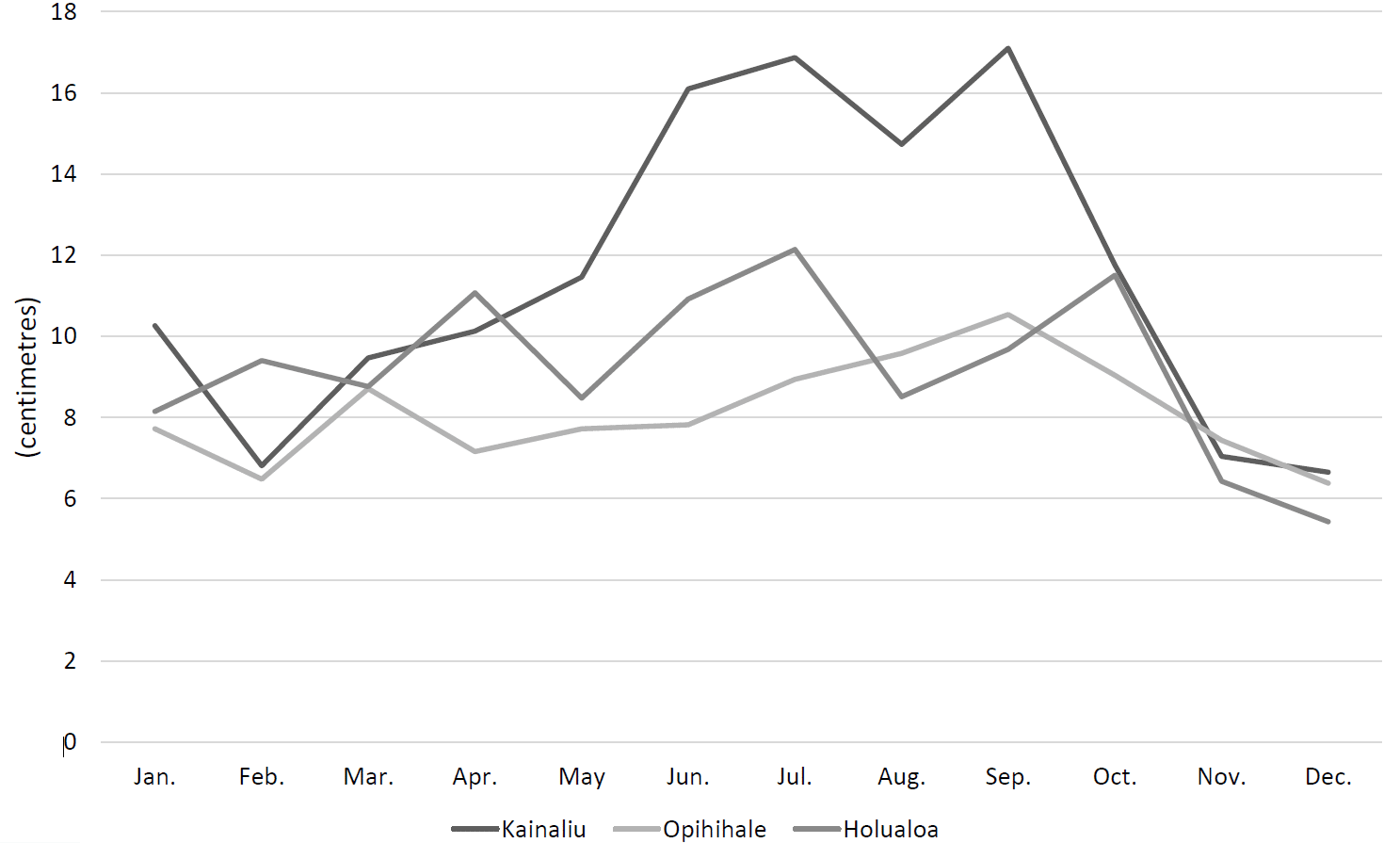
Model Essay (with scorer commentary)
The chart and table show the average monthly and annual rainfall for the towns of Kanaliu, Opihihale, and Holualoa from 1971 to 2000.
Average monthly rainfalls are usually higher from June to September and tend to be lower between October and May. However, rainfall can differ a good deal between towns, and these differences add up to distinctly different annual numbers.
Opihihale usually has the least rainfall but has slightly more (less than 2 cm difference) rainfall than the Holualoa around August, and slightly more than both towns for a time in November. In contrast, Kainaliu’s monthly rainfall is often the highest, 7-9 cm greater than Opihihale and 5-7 cm greater than Holualoa at the height of the summer and fall rainy periods.
The larger differences during the higher rainfall periods add up over the course of the year. In the table, Kainaliu clearly has the most annual rainfall, Opihihale has the least by far, and Holualoa sits between these two extremes, somewhat closer to Opihihale than to Kainaliu.
Scorer Commentary (Comparing Two Graphics, Band 9)
The score report below is based on the official IELTS Writing Task 1 rubric . This report also looks very similar to the Magoosh IELTS essay scoring service .
Overall Band Score: 9
What was done well in the essay:
- This essay has 161 words, more than the 150 minimum. Always make sure you exceed that 150 mark, so you can avoid the IELTS Writing word count penalty .
- The essay covers all the major details seen in the two infographics, describing the overall trends that apply to all three towns. It also covers month-to-month and annual differences, as well as differences between the towns.
- The paragraphs are neatly divided by topic, with a first paragraph overview, followed by a paragraph on overall trends, followed by a paragraph on monthly averages and a paragraph on annual rainfall.
- Great use of transitional phrases such as “however” and “in contrast,” as well as referential phrasing like “these differences” and “in the table.” This clearly illustrates the relationship between different ideas and different pieces of data.
- The vocabulary and grammar works well here. There are no serious errors, and there is a good variety of word choice and sentence structure so that nothing feels repetitive.
More Practice IELTS Academic Writing Task 1 Sample Questions and Model Essays
- IELTS Academic Writing Task 1: Process Diagram with Model Answer
- IELTS Academic Writing Task 1: Bar Chart With Model Answer
- IELTS Academic Writing Task 1: Map With Model Answer
- IELTS Academic Writing Task 1: Line Graph with Model Answer
- IELTS Academic Writing Task 1: Pie Chart with Model Answer
After you’re done with those, make sure you practice other aspects of Writing Task 1, and prepare for the IELTS Writing section as a whole. This collection of IELTS Writing resources can help.

David is a Test Prep Expert for Magoosh TOEFL and IELTS. Additionally, he’s helped students with TOEIC, PET, FCE, BULATS, Eiken, SAT, ACT, GRE, and GMAT. David has a BS from the University of Wisconsin-Eau Claire and an MA from the University of Wisconsin-River Falls. His work at Magoosh has been cited in many scholarly articles , his Master’s Thesis is featured on the Reading with Pictures website, and he’s presented at the WITESOL (link to PDF) and NAFSA conferences. David has taught K-12 ESL in South Korea as well as undergraduate English and MBA-level business English at American universities. He has also trained English teachers in America, Italy, and Peru. Come join David and the Magoosh team on Youtube , Facebook , and Instagram , or connect with him via LinkedIn !
View all posts
More from Magoosh
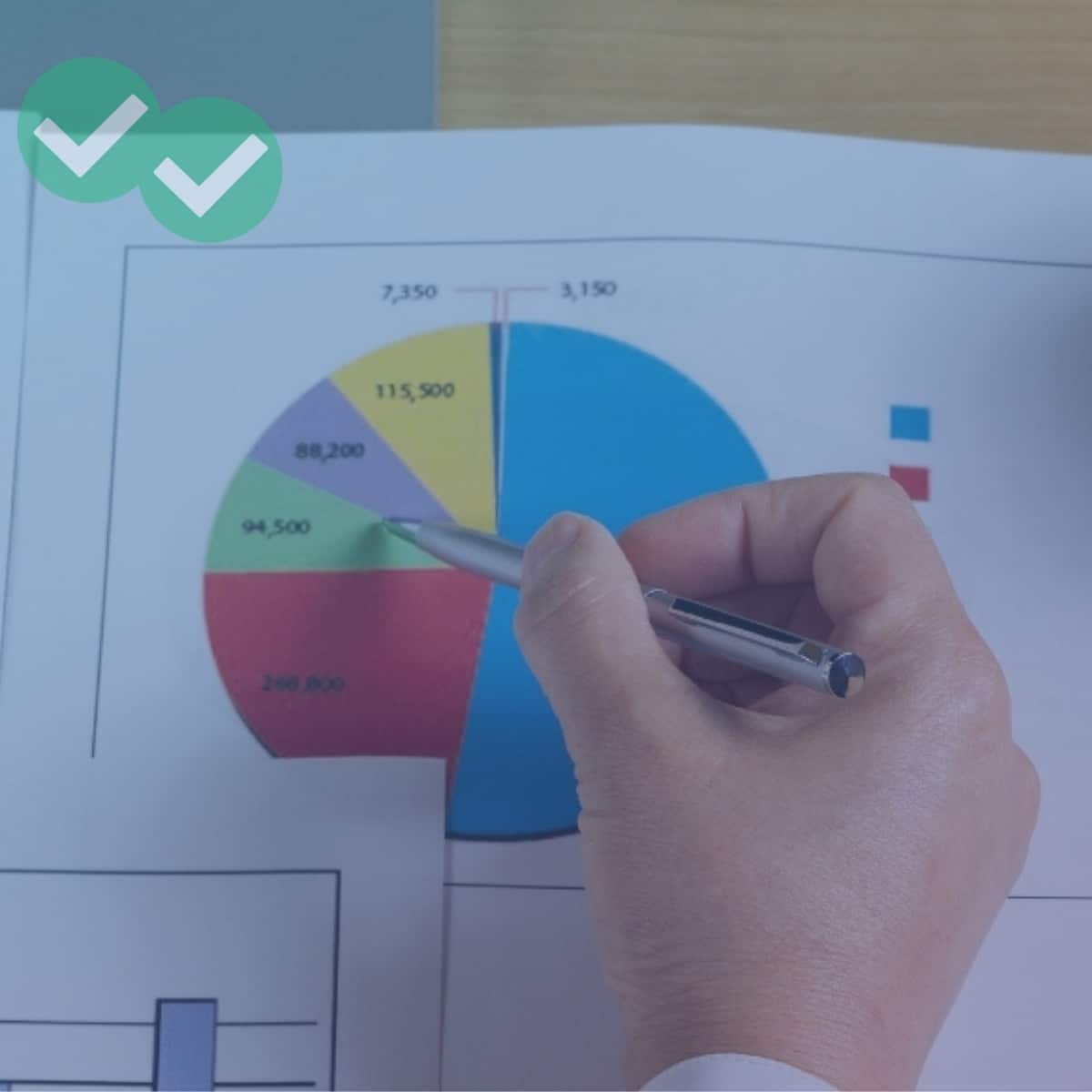
3 responses to “IELTS Academic Writing Task 1: Comparing Two Graphics with Model Answer”
Hello. May I ask how is the rainfall of Opihihale in August is “higher than the other towns”? I see it is only higher than Holualoa but lower than Kainaliu.
I can see what you mean. We’ll adjust the essay 🙂 Thanks for pointing this out!
Thanks for bringing that to my attention, Hiroki! I just went in and fixed it. 🙂
Leave a Reply Cancel reply
Your email address will not be published. Required fields are marked *
IELTS Mentor "IELTS Preparation & Sample Answer"
- Skip to content
- Jump to main navigation and login
Nav view search
- IELTS Sample
IELTS Writing Task 2/ Essay Topics with sample answer.
Ielts writing task 2 sample 658 - compare and contrast knowledge gained from experience with knowledge gained from books, ielts writing task 2/ ielts essay:, it is often cited that “not everything that is learned is contained in books”. according to many, we learn most of the things from our own experience while others believe that books are our main source of knowledge. compare and contrast knowledge gained from experience with knowledge gained from books. in your opinion, which source is more important why .
IELTS Materials
- IELTS Bar Graph
- IELTS Line Graph
- IELTS Table Chart
- IELTS Flow Chart
- IELTS Pie Chart
- IELTS Letter Writing
- IELTS Essay
- Academic Reading
Useful Links
- IELTS Secrets
- Band Score Calculator
- Exam Specific Tips
- Useful Websites
- IELTS Preparation Tips
- Academic Reading Tips
- Academic Writing Tips
- GT Writing Tips
- Listening Tips
- Speaking Tips
- IELTS Grammar Review
- IELTS Vocabulary
- IELTS Cue Cards
- IELTS Life Skills
- Letter Types

- Privacy Policy
- Cookie Policy
- Copyright Notice
- HTML Sitemap
- Ebooks & Courses
- Practice Tests
How To Write an IELTS Map Essay
IELTS map questions are the easiest to answer. There are no numbers to analyse, just 2 or 3 maps to compare. Very occasionally, there might only be a single map, but this is rare.
The maps will be of the same location at different times. This could be in the past, the present time or a plan for a proposed development in the future. You are required to write about the changes you see between the maps.
There are 5 steps to writing a high-scoring IELTS map essay:
1) Analyse the question
2) Identify the main features
3) Write an introduction
4) Write an overview
5) Write the details paragraphs
I must emphasise the importance of steps 1 and 2. It is essential that you complete this planning stage properly before you start writing. You’ll understand why when I guide you through it. It should only take 5 minutes, leaving you a full 15 minute to write your essay.
In this lesson, we’re going to work through the 5 stages step-by-step as we answer a practice IELTS map question.
Before we begin, here’s a model essay structure that you can use as a guideline for all IELTS Academic Task 1 questions.
Ideally, your essay should have 4 paragraphs:
Paragraph 1 – Introduction
Paragraph 2 – Overview
Paragraph 3 – 1 st main feature
Paragraph 4 – 2 nd main feature
We now have everything we need to begin planning and writing our IELTS map essay.
Here’s our practice question:
The maps below show the village of Stokeford in 1930 and 2010.
Summarise the information by selecting and reporting the main features, and make comparisons where relevant.
Write at least 150 words.
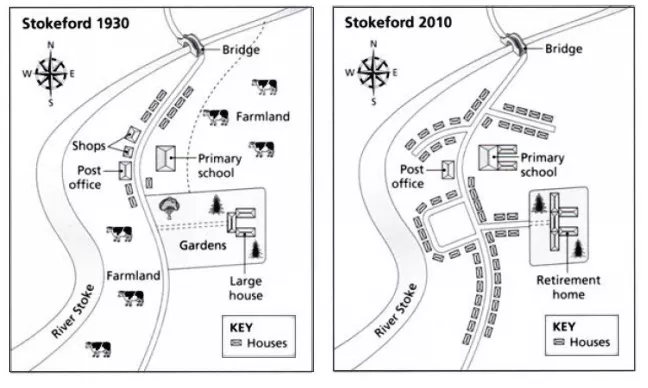
Step 1 – Analyse the question
The format of every Academic Task 1 question is the same. Here is our practice question again with the words that will be included in all questions highlighted.
Every question consists of:
- Sentence 1 – A brief description of the graphic
- Sentence 2 – The instructions
- The graphic – map, chart, graph, table, etc.
Sentence 2 tells you what you have to do.
You must do 3 things:
1. Select the main features.
2. Write about the main features.
3. Compare the main features.
All three tasks refer to the ‘ main features ’ of the graphic. You do not have to write about everything. Just pick out 2 or 3 key features and you’ll have plenty to write about.
Step 2 – Identify the Main Features
All you are looking for are the main features. Start with the earliest map. Identify the key features and look to see how they have changed in the later map, and again in the final map if there are three.
Here are some useful questions to ask?
1) What time periods are shown?
Are the maps of past, present or future situations? This is important to note because it will determine whether you write your essay using past, present or future tenses.
The two maps in our practice IELTS map question show the village of Stokeford at two different times in the past. This immediately tells us that we will need to use the past tense in our essay.
2) What are the main differences between the maps?
What features have disappeared? What new features are in their place?
3) What features have remained the same over the time period?
Although the location on the maps will have undergone major development, some features may remain unchanged.
Also, think about directional language you can use, such as:
So, what information is contained our maps? Here they are again.

Source: IELTS past paper
There are a number of different features we could select such as, the loss of the shops, the disappearance of farmland, the enlargement of the school and the development of the large house into a retirement home.
Many maps will contain far more changes than our sample maps and the changes may be more complex. In such cases, you won’t have time to write about all of them and will need to select just 2 or 3 main features to focus on.
Our maps are quite simple so we’ll list all 4 of the major changes I’ve just identified.
Main feature 1: The farmland has been built on.
Main feature 2: The large house has been converted into a retirement home.
Main feature 3: The school has been enlarged.
Main feature 4: The shops have disappeared.
The key features you select will be the starting point for your IELTS map essay. You will then go on to add more detail later. However, with just 20 minutes allowed for Task 1, and a requirement of only 150 words, you won't be able to include many details.
We’re now ready to begin writing our essay. Here’s a reminder of the 4 part structure we’re going to use.
For this essay, we’ll adapt this a little to write about two of the features in Paragraph 3 and the other two features in Paragraph 4.
Step 3 – Write an Introduction
In the introduction, you should simply paraphrase the question, that is, say the same thing in a different way. You can do this by using synonyms and changing the sentence structure. For example:
Introduction (Paragraph 1):
The two maps illustrate how the village of Stokeford, situated on the east bank of the River Stoke, changed over an 80 year period from 1930 to 2010.
This is all you need to do for the introduction.
Step 4 – Write an Overview (Paragraph 2)
In the second paragraph, you should describe the general changes that have taken place. The detail comes later in the essay.
State the information simply. No elaborate vocabulary or grammar structures are required, just the appropriate words and correct verb tenses.
For example:
Overview (Paragraph 2):
There was considerable development of the settlement over these years and it was gradually transformed from a small rural village into a largely residential area.
Two sentences would be better than one for the second paragraph but we’ll be getting into the detail if we say more about these maps at this point, so we’ll leave the overview as one sentence.
Step 5 – Write the 1st Detail Paragraph
Paragraphs 3 and 4 of your IELTS map essay are where you include more detailed information. In paragraph 3, you should give evidence to support your first 1or 2 key features.
In the case of our main features, 1 and 3 are closely related so we’ll write about these two together.
Here they are again:
And this is an example of what you could write:
Paragraph 3 :
The most notable change is the presence of housing in 2010 on the areas that were farmland back in 1930. New roads were constructed on this land and many residential properties built. In response to the considerable increase in population, the primary school was extended to around double the size of the previous building.
Step 6 – Write the 2nd Detail Paragraph
For the fourth and final paragraph, you do the same thing for your remaining key features.
Here are the two we have left:
This is an example of what you could write:
Paragraph 4 :
Whilst the post office remained as a village amenity, the two shops that can be seen to the north-west of the school in 1930, no longer existed by 2010, having been replaced by houses. There also used to be an extensive property standing in its own large gardens situated to the south-east of the school. At some time between 1930 and 2010, this was extended and converted into a retirement home. This was another significant transformation for the village.
Here are the four paragraphs brought together to create our finished essay.
Finished IELTS Map Essay
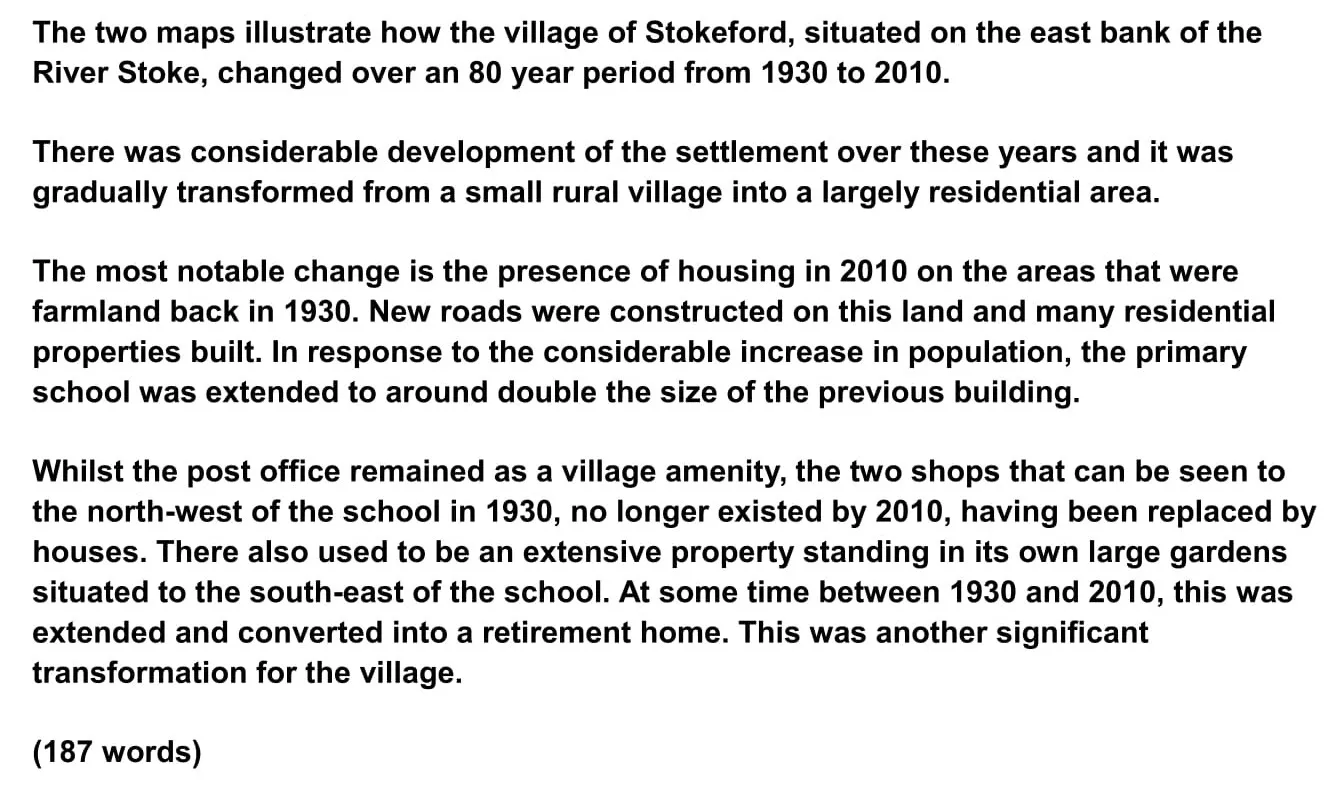
This sample IELTS map essay is well over the minimum word limit so you can see that you don’t have space to include very much detail at all. That’s why it is essential to select just a couple of main features to write about.
Now use what you’ve learnt in this lesson to practice answering other IELTS map questions. Start slowly at first and keep practicing until you can plan and write a complete essay in around 20 minutes.
Want to watch and listen to this lesson?
Click on this video.
Would you prefer to share this page with others by linking to it?
- Click on the HTML link code below.
- Copy and paste it, adding a note of your own, into your blog, a Web page, forums, a blog comment, your Facebook account, or anywhere that someone would find this page valuable.
Like this page?
Ielts academic writing task 1 – all lessons.
IELTS Academic Writing – A summary of the test including important facts, test format & assessment.
Academic Writing Task 1 – The format, the 7 question types & sample questions, assessment & marking criteria. All the key information you need to know.
Understanding Task 1 Questions – How to quickly and easily analyse and understand IELTS Writing Task 2 questions.
How To Plan a Task 1 Essay – Discover 3 reasons why you must plan, the 4 simple steps of essay planning and learn a simple 4 part essay structure.
Vocabulary for Task 1 Essays – Learn key vocabulary for a high-scoring essay. Word lists & a downloadable PDF.
Grammar for Task 1 Essays – Essential grammar for Task 1 Academic essays including, verb tenses, key sentence structures, articles & prepositions.
The 7 Question Types:
Click the links below for a step-by-step lesson on each type of Task 1 question.
- Table Chart
- Process Diagram
- Multiple Graphs
- IELTS Writing
- IELTS Maps Essays
- Back To Top
* New * Grammar For IELTS Ebooks

$9.99 each Full Set Just $ 23.97
Find Out More >>
IELTS Courses

Full details...

IELTS Writing Ebook

Discount Offer
$7 each Full Set Just $ 21

Find out more >>
Testimonials
“I am very excited to have found such fabulous and detailed content. I commend your good work.” Jose M.
“Thanks for the amazing videos. These are ‘to the point’, short videos, beautifully explained with practical examples." Adari J.
"Hi Jacky, I bought a listening book from you this morning. You know what? I’m 100% satisfied. It’s super helpful. If I’d had the chance to read this book 7 years ago, my job would be very different now." Loi H.
"Hi Jacky, I recently got my IELTS results and I was pleased to discover that I got an 8.5 score. I'm firmly convinced your website and your videos played a strategic role in my preparation. I was able to improve my writing skills thanks to the effective method you provide. I also only relied on your tips regarding the reading section and I was able to get a 9! Thank you very much." Giano
“After listening to your videos, I knew I had to ditch every other IELTS tutor I'd been listening to. Your explanations are clear and easy to understand. Anyways, I took the test a few weeks ago and my result came back: Speaking 7, listening 9, Reading 8.5 and Writing 7 with an average band score of 8. Thanks, IELTS Jacky." Laide Z.
Contact
About Me
Site Map
Privacy Policy
Disclaimer
IELTS changes lives.
Let's work together so it changes yours too.
Copyright © 2024 IELT Jacky
All Right Reserved
IELTS is a registered trademark of the University of Cambridge, the British Council, and IDP Education Australia. This site and its owners are not affiliated, approved or endorsed by the University of Cambridge ESOL, the British Council, and IDP Education Australia.
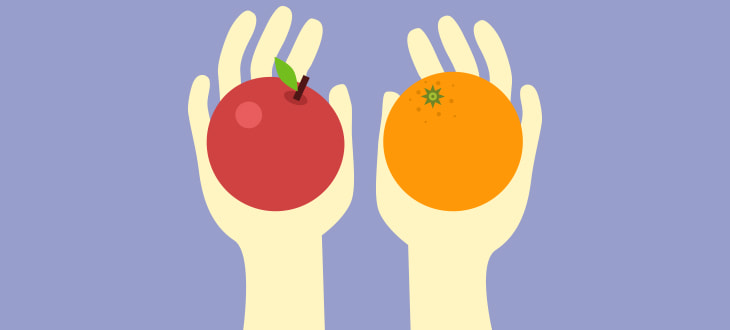
How to Write ‘Compare and Contrast’ Type of Essay in IELTS Writing Task 2?
In ‘compare and contrast’ type of essay, IELTS examiners want you to discuss the points of comparing and contrasting the two things i.e. similarities and differences between the two. Therefore, it is important that you find out relevant points of similarities and differences of the two mentioned things after reading the question for IELTS Writing . Let’s look at an example:
Some people want to live in a house while others prefer living in an apartment.
Does living in a house bring more advantages than living in an apartment.
With this type of essay for IELTS Writing , you have two points to be discussed as follows:
- Benefits of living in a house/apartment
- Issues of living in an house/apartment
You must discuss both of them by giving reasons and support them with examples. And at the end, mention which of the two is better and why. If you do not discuss any of the above two points in the essay, you will lose marks.
So, in this type of essay, you must explain both the points.
How to structure IELTS Writing asnwer?
The essay can be structured mainly in 4 paragraphs as follows:
Paragraph 1: Introduction
Paragraph 2: Benefits of living in a house/apartment
Paragraph 3: issues of living in a house/apartment, paragraph 4: conclusion.
Further structuring of the paragraphs can be done as follows:
a. Paragraph 1- Introduction
Sentence 1- Paraphrase the Question
Sentence 2-Outline the sentence
b. Paragraph 2- Body Paragraph 1 (Apartment)
Sentence 1- State the benefit
Sentence 2- Explain how it brings this benefit
Sentence 4- Write an example
c. Paragraph 3 – Body Paragraph 2 (House)
Sentence 1- State the issue
Sentence 2-Explain how it leads to this issue
Sentence 3- Write an example
d. Paragraph 4- Conclusion
Sentence 1- Summary of the main point to conclude which is better and why Four paragraphs are sufficient to explain your point of view. You may use any other structure you are comfortable with but this structure is approved by the IELTS examiners to help the students write in an effective and cohesive manner.
Vocabulary:
Useful vocabulary for comparison points.
- to be the same as
- both… and…
- neither… nor…
- not only… but also…
- to be alike
- just like (+ noun)
- to be similar (to)
- similar to (+ noun)
- to compare (to/with)
Useful vocabulary for Contrasting points
- in contrast
- by comparison
- in comparison
- on the other hand
- to differ from
- to be dissimilar to
- to be different (from)
- to be unlike
You should spend about 40 minutes on this task.
Write about the following topic:
Give reasons for your answer and include any relevant examples from your own knowledge or experience.
Write at least 250 words.
Sample Answer:
There are many people who believe that living in a house is the best. However, some people disagree with this opinion and instead prefer to live in an apartment. This essay makes comparison of the two and chooses the most preferred option.
To begin with, living in a flat definitely brings several advantages to a resident. One of the most important reasons behind this is the huge convenience it offers. An apartment is a part of large building giving a feel of living in a small societal association which takes responsibility of any fix or repair or maintenance required. For example, if one needs to repair the roof, the maintenance charges are borne by the landlord. Moreover, various facilities as well as amenities are available nearby including shopping mall, tuition centre, medical store, bus station and so on.
On the other hand, living in an owned house does not offer the facilities that one can avail while living in an apartment. One reason for this is that it is quite lonely to stay in a house which occupies a large land area bringing boredom and snatching the joy of living with so many people around. For example, it would be such a dull experience of sitting alone in the garden with no one around to share life experiences. In addition to this, maintenance and cleanliness of the house are borne by the owner and thus it is costly to live in a house.
Conclusively, living in an apartment is comparatively better than staying lonely in a house. Though a house provides a large spacious area to move around but living in an apartment enhances more social interaction and adds more excitement to life.
(283 words)
Write an essay with minimum 250 words. Use the above mentioned vocabulary. 1. Some people think that learning online is more efficient. However, according to some other people, studying from books is still the preferred method. Which is the better method of learning out of the two?
2. Distance education is gaining popularity day by day and more students are enrolling through distance mode than full-time course in colleges. Make comparison of distance education and full-time course to find which is better and why.
3. A growing number of people own personal vehicle as they find it a convenient mode of transport in comparison to public transport. Compare the public and private mode of transportation and state which is better out of the two.
Share with friends
Scan below qr code to share with your friends.
Related IELTS tips

Make and verbs that mean make
The Cambridge Learner Corpus shows that some of the most frequent collocation...

What is the IELTS Speaking Assessment Criteria?
Knowing the assessment criteria for your Speaking test is the first step...

IELTS Writing Task 1 Analysis (Moving to New House) – Band 7
In this article, we will analyse IELTS writing task 1 response of...

A Guide to Concise Writing
In writing, conciseness is essential. You have to fill out your 250-word-essay...

IELTS Writing Task 1 Analysis (Requesting Leaves) – Band 7
Let us try to analyse the IELTS writing task 1 perfromance of a candidate. Question:...
Thank you for contacting us!
We have received your message.
We will get back within 48 hours.
You have subscribed successfully.
Thank you for your feedback, we will investigate and resolve the issue within 48 hours.
Your answers has been saved successfully.
Order của bạn
Iot credits của bạn không đủ để thanh toán.
IOT credits của bạn không đủ để thanh toán. Vui lòng mua thêm IOT credits để tiếp tục.

IELTS Writing: How to Use Academic Hedging in Task 2 Essays IELTS Podcast
- Language Learning
Unlock the secrets to enhancing your IELTS Writing Task 2 scores through academic hedging. Why Is Academic Hedging a Key to Higher IELTS Band Scores? Mastering academic hedging can significantly impact your IELTS Writing Task 2 scores. This technique not only polishes your language but also embodies an academic tone, essential for achieving Band 7 and beyond. How Can Academic Hedging Propel Your Essay From Band 6.5 to Band 7? Academic hedging, by introducing nuanced language to express degrees of certainty, adds depth to your arguments, making a smooth transition from Band 6.5 to Band 7 achievable. What Role Does Grammatical Range and Accuracy Play? Subtle language adjustments in academic hedging not only convey complex ideas more effectively but also enhance grammatical range and accuracy, crucial for a higher score. Understanding the Importance of Distancing in Academic Writing Distancing from absolute statements without empirical evidence showcases your ability to approach topics with intellectual humility, reflecting critical thinking and Band 7 proficiency. Transforming Your Essays with Academic Hedging: Practical Examples See how academic hedging can transform statements, making your arguments more nuanced and academically rigorous: * Original: “Climate change is undoubtedly caused by human activities.” Hedged: “There is substantial evidence to suggest that human activities may significantly contribute to climate change.” * Original: “Technology always improves the quality of life.” Hedged: “In many instances, technological advancements have been observed to enhance the quality of life.” * Original: “Education is the only solution to societal problems.” Hedged: “Education is widely regarded as a potential catalyst for addressing various societal challenges.” Concluding Thoughts on Mastering Academic Hedging Integrating academic hedging into your essays not only boosts grammatical accuracy and coherence but also adds sophistication, leading to an improved band score. You can download or listen to the audio version here: | Direct Download Here | Stitcher | iTunes | Spotify | Transcript available by clicking here. Related Articles * IELTS Writing Task 2 Strategies * Top IELTS Speaking Tips * Effective IELTS Reading Tips Explore More Discover more about academic writing at Harvard University’s Writing Center. Share this article: Link to Article About the Author: Ben Worthington, founder of IELTSPodcast, has dedicated his career to helping students achie...
- Episode Website
- More Episodes

IMAGES
VIDEO
COMMENTS
Sentence 1- State the issue. Sentence 2-Explain how it leads to this issue. Sentence 3- Write an example. d. Paragraph 4- Conclusion. Sentence 1- Summary of the main point to conclude which is better and why Four paragraphs are sufficient to explain your point of view. You may use any other structure you are comfortable with but this structure ...
Pointing out the differences between two or among three or more items can be expressed in two ways. A. Contrasting with one sentence. - This means pointing out the difference/s in items with the use of just one (1) sentence. - Here you make use of the words/phrases like while, whereas, however, but, in contrast to, compared with, and more.
Part 1. The purpose of a compare and contrast essay is to analyse the differences and/or the similarities of two distinct subjects. A good compare/contrast essay doesn't only point out how the subjects are similar or different, it uses those points to make a meaningful argument about the subjects. While it can be a little intimidating to ...
In IELTS Writing Task 1, you are commonly provided with graphs, pie charts, etc. which have data that should be compared and contrasted. In this lesson, you will learn the type of vocabulary that you've got to use to compare and contrast information in the graph. Comparative and Superlatives
Ways to compare 1 - Use the "contrast" comparison. Our first way to compare is a good one for lower level learners as it does not require any specialist comparison language. All we are going to do is write one sentence describing X and a contrasting sentence describing Y, and join the two sentences using "In contrast".
IELTS Writing Practice Guide; IELTS Writing Task 2 Essential Information. You must write an essay in response to a question. You must write 250 words or more. Task 2 is worth 2/3 of your total mark on the Writing test. You should spend around 40 minutes on this part of the test. General Training and Academic are essentially the same for Task 2.
Sentence 1- State the issue. Sentence 2-Explain how it leads to this issue. Sentence 3- Write an example. d. Paragraph 4- Conclusion. Sentence 1- Summary of the main point to conclude which is better and why. Four paragraphs are sufficient to explain your point of view. You may use any other structure you are comfortable with but this structure ...
You can use "compared to", "compared with" and "in comparison with" in the same way. For example: Prices in the UK are high compared to / with / in comparison with (prices in) Canada and Australia. Compared to / with / in comparison with (prices in) Canada and Australia, prices in the UK are high. When writing about numbers or changes, I find it easier to use "while" or "whereas": There are 5 ...
This video will talk about how to write a Compare and Contrast Essay following the essay structure. Observe closely the language mentioned and how to add com...
In the majority of IELTS essays and reports, there will be a need to signpost the direction of your essay. At other times you will need to compare and contrast ideas from the question and contrast your own response. In case you were unaware, signposting means showing your reader that the idea or point in your writing is taking a different ...
Proofread your essay carefully before submitting it. We hope these tips help you to write a great comparison essay for your IELTS Writing Task 1. Here are some examples of comparison essay questions that you might be asked in the IELTS Writing Task 1: Compare and contrast the two graphs below. Compare and contrast the two maps below.
These free tips, model essays, lessons, videos and information will help develop the skills for writing task 2. This page will teach you how to maximise your IELTS writing task 2 score. All lessons are on this page are for both GT and Academic writing task 2. On this page, you will find for free: Test Information for Writing Task 2.
Comparing and contrasting can help in this respect. If you want to increase your IELTS band score further and impress the examiner, try to vary your language and provide a number of structures when reporting the information you see. This can be demonstrated by using a number of comparing and contrasting language structures and variations.
1.1 Comparatives and superlatives. One of the aims of IELTS writing task 1 is to compare and contrast information given in a graph, chart or diagram. If you want to achieve a higher IELTS band score, you need to use a range of language and grammatical structures accurately. One way to compare and contrast is to use comparatives and superlatives.
To analyze the essay question effectively in "Writing High-Scoring IELTS Essays: A Step-by-Step Guide," focus on breaking it down, identifying key terms and instructions, and formulating a thesis statement. These sub-sections will provide the solution you need to approach the essay question strategically and produce a well-structured and ...
Being able to compare and contrast data is an essential skill for IELTS writing, especially in Task 1. Comparatives and superlatives are one common way to do this. Comparatives are used to compare two things: Leopards are faster than tigers. Superlatives are used to compare one thing against a group of others:
The point of comparing and contrasting at this stage is to help you organize and shape your ideas to aid you in structuring your arguments. Structuring your comparisons. When comparing and contrasting in an essay, there are two main ways to structure your comparisons: the alternating method and the block method. The alternating method
Write at least 250 words. An IELTS essay is structured like any other essay; you just need to make it shorter. There are three key elements: Introduction. Body Paragraphs. Conclusion. We will look at each of these in turn, using the essay question above as an example.
Step one: Plan your time. The Writing test (consisting of Writing tasks 1 and 2) takes approximately 60 minutes. Plan to spend around 20 minutes on your first task, and 40 minutes on your essay task. A sample plan for your time might be: 5 to 10 minutes reading the essay question and planning your answer. 15 to 20 minutes writing your first draft.
Scorer Commentary (Comparing Two Graphics, Band 9) The score report below is based on the official IELTS Writing Task 1 rubric. This report also looks very similar to the Magoosh IELTS essay scoring service. Overall Band Score: 9. What was done well in the essay: This essay has 161 words, more than the 150 minimum.
IELTS Writing Task 2/ IELTS Essay: You should spend about 40 minutes on this task. It is often cited that "Not everything that is learned is contained in books". According to many, we learn most of the things from our own experience while others believe that books are our main source of knowledge.
You are required to write about the changes you see between the maps. There are 5 steps to writing a high-scoring IELTS map essay: 1) Analyse the question. 2) Identify the main features. 3) Write an introduction. 4) Write an overview. 5) Write the details paragraphs. I must emphasise the importance of steps 1 and 2.
Sentence 1- State the issue. Sentence 2-Explain how it leads to this issue. Sentence 3- Write an example. d. Paragraph 4- Conclusion. Sentence 1- Summary of the main point to conclude which is better and why Four paragraphs are sufficient to explain your point of view. You may use any other structure you are comfortable with but this structure ...
* IELTS Writing Task 2 Strategies * Top IELTS Speaking Tips * Effective IELTS Reading Tips Explore More Discover more about academic writing at Harvard University's Writing Center. Share this article: Link to Article About the Author: Ben Worthington, founder of IELTSPodcast, has dedicated his career to helping students achieve their IELT ...